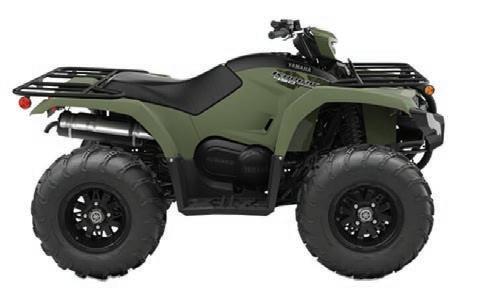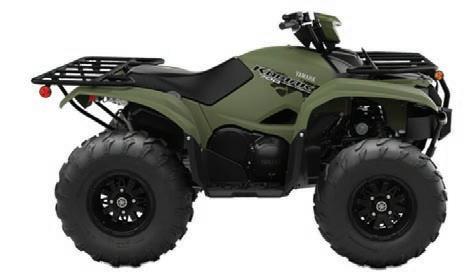






















Circulating to 14,500 rural properties in Nelson, Tasman, Marlborough and the West Coast every month.
News
Eloise Martyn eloise@topsouthmedia.co.nz
Advertising Sales
Danielle Brown danielle@topsouthmedia.co.nz
Summa Donald summa@topsouthmedia.co.nz
Steve Page steve@nmf.co.nz
Accounts Queries accounts@topsouthmedia.co.nz
563 Main Road Stoke, Nelson 03 548 5900
52 Scott Street, Blenheim 03 928 4121
19 Wallace Street, Motueka 03 528 2088
ANDREW RITCHIE
This year was the 240th anniversary of the Royal Highland Agricultural Society of Scotland. The Show is Scotland’s biggest outdoor event, and the largest fundraising event for the charity which is held over four days in June at Ingliston, near Edinburgh. The Show contributes over 45 million pounds to the local economy. As a life member since 1968 I had the privilege of attending the event this year. Although having lived in New Zealand for the past 38 years I may not have had my money’s worth.
The Show hosted approximately 220,000 guests and there were some 6000 livestock entries.
The Chairman of the Society, James Warnock, says the event stands as a great testament to the hard work of farmers, producers and artisans who work in the industry. Twenty different breeds of beef and dairy cattle were housed in the massive cattle pavilion while covered pens housed 29 breeds of sheep ranging from the native breeds such as the Scottish

Blackface, Ryeland, Jacob and Cheviot to the European varieties such as the Charollais, Bleu du Maine and Texel. Eight hundred trade stands showcasing everything from agricultural machinery to produce that connects the farm to the glass, the fork or the clothes rack and there are demonstrations from gundogs, sheepdogs and fly casting.
Particularly interesting was the birds of prey demonstration where owls, falcons, vul-
tures and the mighty eagle showed off their aerial skills.
In the main ring equestrian classes were taking place from show hunters to Shetlands, and most impressive, a large and popular class of ridden Clydesdales. If anyone is planning a trip travelling through Scotland in June of any year this is a must-see event As with farmers the world over Scottish farmers had much to say about the weather. One claimed it had rained since October and cereal crop
establishment was badly hit. Spring crops were sown late in the season and in-ground fertiliser was instantly washed away by in excess of 150 mm of rain. Milling wheat was trading for $500 NZ/tonne, while feed wheat was worth $375 NZ.
Milk was worth approximately 75 cents/litre, but amongst livestock breeders the mood was more optimistic. New season lamb was making $14 NZ plus /kg and beef $10 NZ plus/kg.
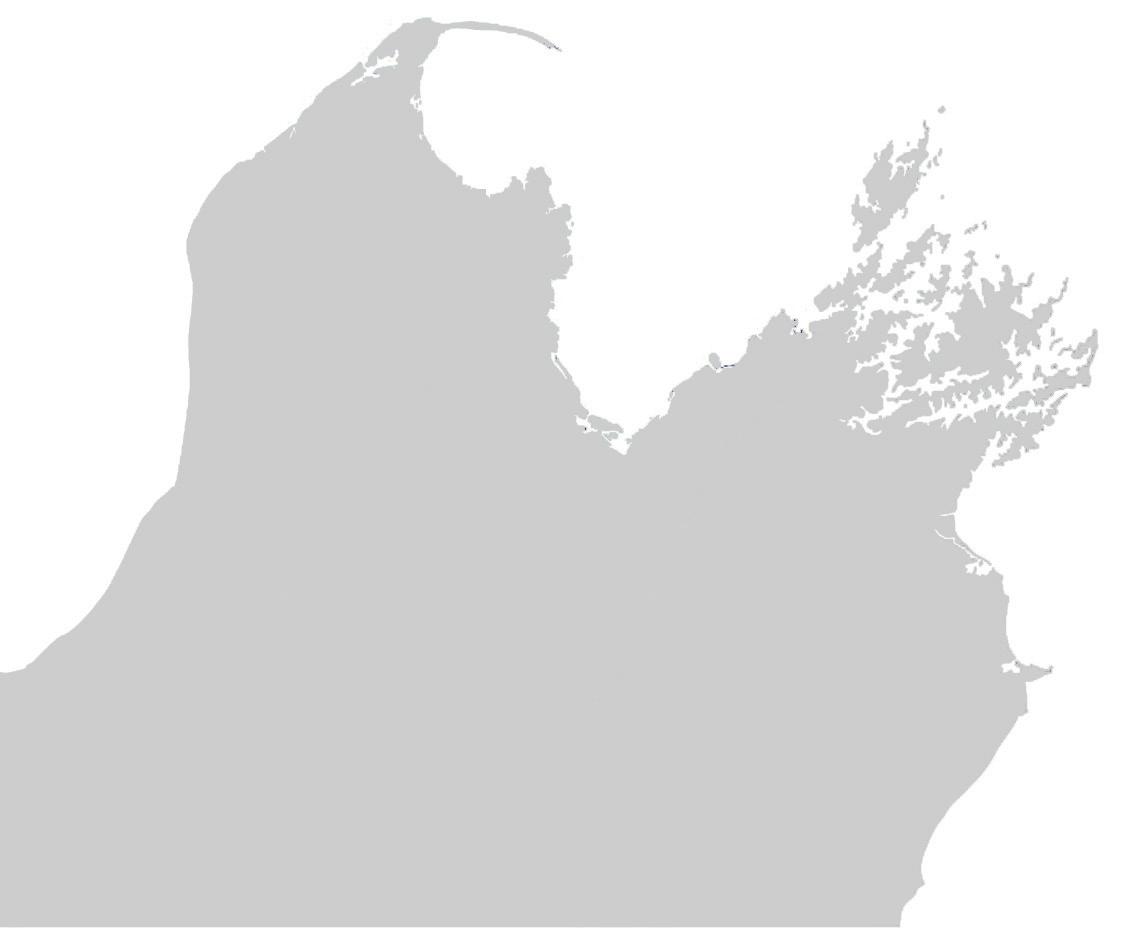



NZ Kiwiberries head to China after 8-year hiatus
China and New Zealand governments have signed a new protocol allowing the recommencement of trade for NZ kiwiberries (bite-sized kiwifruit) after an eight-year hiatus. The kiwiberry export plan was signed at Government House in June and is subject to conditions such as pest monitoring, labelling, crop registration and more. Kiwiberries are currently exported to around 12 countries which will continue to happen with the addition now of China.
Synlait shareholders have overwhelmingly approved a $130 million loan, a decision that followed tense anticipation. The loan, secured from its 39 per cent shareholder China’s Bright Dairy, was urgently needed to settle debts with banks before the deadline of June 15th. The crucial shareholders’ meeting convened at 2 pm on June 11th. Synlait’ s chairperson, George Adams, expressed relief, noting, “It wasn’t close at all, actually. We had 99.6 per cent of our shareholders voting in favour, so it was a landslide.” A2 Milk, holding a 20 per cent stake in Synlait, supported the loan but expressed reservations, plan-
ning further discussions with Synlait in the coming weeks.
The report for 2023/24 from Baker Ag’s Dairy Systems Monitoring suggests farmers are gearing up for a season of strict budgeting. It highlighted the margin between farm costs and milk price of $2.20 per kilogram of milk solids (for the 23/24 season with the new season unfolding similarly. The average farm interest expense amounts to $1.70 / kg MS, leaving 60 cents/kg MS for discretionary spending this season after accounting for principal repayment, equipment replacement, withdrawals, and taxes. The report analyses the financial and production outcomes of 60 dairy farms located in the lower North Island and South Island. Together, these farms cover 15,666 milking hectares and produce just over 19 million kilograms of milk solids. Despite the pressure, Baker Ag believes the industry could see a favourable increase in late spring / early summer.
Onion growers have established efficient export pathways to their valuable
market, Indonesia. They no longer require fumigation instead, consignments of onions will be inspected at New Zealand packhouses and growing areas, with verification from the Ministry for Primary Industries (MPI). Once the MPI is satisfied, export certification for the onion consignments will be issued. Fumigation can affect onion quality. The agreement was signed between Todd McClay, Minister of Agriculture, and the head of the Indonesia Quarantine Authority (IQA), Dr Sahat Manaor Panggabean. It was indicated that the move would save onion growers time and money and was significant for our onion industry which exports 85% of all New Zealand grown onions with their most valuable market being Indonesia.
Marlborough airying survey shows high compliance
At the Marlborough Federated Farmers monthly meeting, Simon Harvey reported on Marlborough District Council environment committee work and said a recent survey of stream crossings and dairy shed effluent covering 41 farms resulted in only one farm “slightly non-compliant”.
“It was a very good outcome and very commendable,” he added.
Rural crime is increasing in the Top of the South, with a significant portion occurring through farm gate theft.
Historically, farm entrances have been vulnerable due to their open and unmonitored nature, making farms easy targets for unauthorised visitors.
Federated Farmers’ ‘Rural Crime’ survey from December 2023 revealed alarming trends: 67% of over 1,000 surveyed farmers reported experiencing or suspecting crime, marking a 14.7% increase from 2021 and a 26% rise since 2016. The occurrence of multiple criminal incidents also nearly doubled, with theft of quad bikes, livestock, and valuable equipment like chainsaws being common targets. FMG highlighted quad bike thefts occurring primarily at night near residential or farm buildings, emphasising the importance of security lighting as a deterrent and where possible locking quads inside. Despite the financial and emotional toll—estimated at $120 million annually for stock theft

‘Farmgate’ security boom gate system which allows authorised vehicles through. Photo: Farmgate.
alone—much of this crime goes unreported to the police. FMG advises farmers to report theft of livestock, make valuable gear less attractive engraving it boldly, locking sheds and fuel tanks, and to maintain a detailed asset register including serial numbers or other identifying information. To combat these challenges, many farms are adopting advanced security measures such as security cameras and the ‘Farmgate’ system,
a German-engineered setup that includes vehicle license plate recognition and boom gates. The boom gates will open to allow authorised vehicles through, such as milk trucks and farm workers, but will close if a stolen vehicle is detected. This technology allows farmers to monitor and control vehicle access remotely via an app. If an unknown vehicle is detected, the system alerts the farmer and if a stolen vehicle is detect-
FROM PAGE 1
Double records were smashed at Matariki’s long weekend River Inn Moonlight Hunt at Tākaka in July.
170 junior and adult hunters were all guns blazing with more than $20,000 was raised for the Nelson Marlborough Rescue Helicopter, and Tākaka local Jack Holland to support his level four melanoma treatment. The fundraising smashed the expectation of $12-13k with the most competitors in the hunt’s history.
Adult categories included heaviest boar, sow, stag, hind, and fellow stag and hind, as well as biggest tusks, average pig and local’s heaviest boar. Junior gongs were for the heaviest hare, possum, goat and herrings, and most hares and possums. An open category for most goat tails was also in play along with a wild game pie competition at the weigh-in.
Jamie Sixtus, who co-hosted the four-day bash with his mother Paula, and father Richard, says they were “absolutely blown away” by the result.
“We’ve had a few comments back already from people saying they couldn’t believe how amazing the hunt actually was,” he says, “We got 47 deer, 42 pigs, and we had 90 goat tails entered… 40 plus hares, and a dozen or so possums,”
“The weigh-in was a vibrant family-friendly atmosphere with gumboot throws for the adults and the kids were running around with hares and doing gumboot throws as well.”




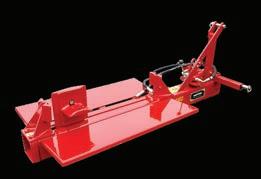

ed, it alerts both the farmer and the police. The system can be run on mains, or a solar option and provides a proactive approach to protecting farm assets and enhancing security measures effectively.
To reduce rural crime on your property, you need to implement several measures such as those listed above, and embrace the advancing technologies available including vehicle recognition detection.





The Top of the South Forestry Awards once again celebrated the skilled workforce within the forestry industry, highlighting the importance of the people who work tirelessly to support the industry.
Supported by local forest companies, contractors, service providers, councils, and local ports, the event showcased the diversity of jobs and career paths available within the industry across the Tasman and Marlborough regions in the top of the south.
This year, Kevin Palmer of Taylors Contracting Co. Ltd. took home the prestigious Skilled Professional of the Year award. Committed to the industry through his family’s business, Kevin’s dedication to excellence, commitment to safety, and proactive approach to environmental practices made him a deserving recipient of the award. Kevin’s reputation for delivering exceptional service highlights his exceptional contribution to the forestry sector. Significant wins were also achieved by Nigel Bryant Logging Ltd. and Taylors Contracting Co. Ltd., each taking home four categories. Hall of Fame recipient Doug McLeod was honoured for his unwavering dedication, exceptional leadership, and genuine care for the industry and its people. Doug’s legacy of ex-
cellence and commitment will continue to inspire future generations in the forestry sector including the continued impact on the industry. This year, the categories were similar with a few new ones added. Breaker Out Excellence was included again, and the People’s Choice award for the Good Deed was introduced. Industry players submitted good deeds to be considered for this award, and on the awards night, the recipients and their deeds were acknowledged. The guests in attendance then voted for their favourite good deed.
A highlight of the evening was the announcement of a $3000 scholarship, awarded to Zodus Epiha for his enthusiasm and commitment to the forestry industry. This scholarship will support Zodus as he progresses through his NZ Certificate in Forestry Harvesting Operations (Level 3) and pursues a career in the industry.
MC Simon McKinney entertained the 580 guests at the Trafalgar Centre in Nelson, acknowledging the 78 nominees, all the winners and managing the evening’s celebrations. The event was a sellout, showcasing the innovation and highly skilled workforce within the forestry industry in the Tasman and Marlborough districts.

Nathan Taylor, Chair of The Top of the South Forestry Awards, with Kevin Palmer – Skilled Professional of the Year. Photo: Supplied.


A new rural professional group has started in the Top of the South, aimed to foster networking, sharing resources, supporting farmers and growers better, and enhancing collaboration for personal and professional growth.
Kirstie Dodds, one of the driving forces of the new group says: “I moved from Canterbury to Wakefield around three years ago to take on my role at ITO, I only knew one person here which was daunting.
“From that I was keen to help
connect others in the rural sector and when I started talking to people about the idea of having a casual rural professionals catch up, or group, so many were interested,” she said.
Recently, Kirstie hosted the first Top of the South Rural Professionals coffee catch-up, where attendees from the Nelson and Tasman regions gathered to share ideas and discuss the group’s direction.
“Everyone shared similar thoughts, focusing on networking and establishing a space to unwind, socialise, and explore ways to better support
farmers and growers together,” Kirstie explains.
As the group expands, they plan to rotate catch-up locations to cater for everyone in the region.
Anyone interested in connecting can visit their Facebook page, “Top of the South - Rural Professionals,” for updates on upcoming events. Kirstie encourages anyone planning to attend to RSVP by clicking ‘going’ as she uses those numbers for table bookings.
“Join us to connect, collaborate, and grow together in the rural sector,” Kirstie says.
ANDREW HOGGARD Associate Minister of Agriculture
A vaccine to prevent an infectious disease that costs New Zealand cattle farmers more than $190 million each year could radically improve the health of our cows and boost on-farm productivity, Associate Agriculture Minister Andrew Hoggard says. The Ministry for Primary Industries is backing a project that aims to develop a modified live virus vaccine against Bovine Viral Diarrhea (BVD). The project will focus on developing an effective immunogen that is safe to use on New Zealand farms.
“Cattle infected with BVD suffer a range of symptoms, including reproductive losses, reduced growth rates, and low-

ered milk production, with the disease ultimately leading to their death,” Mr Hoggard says. This prevalent disease impacts around 80 per cent of New Zealand’s dairy and beef herds and costs our farmers more than $150 million every year in direct production losses and $40 million in ongoing expens-
es from BVD control.” New Zealand currently has three registered vaccines for BVD, with an efficacy rate of about 60 to 65 per cent. The current vaccines use the inactivated BVD virus as the immunogen. They require a two-dose initial vaccination followed by annual revaccination.
“This leaves significant room for improvement. The existing vaccines are all from overseas, so this will be the first ever project to develop a vaccine specific to New Zealand strains of BVD. “This is an opportunity for Kiwi ingenuity to shine and help protect our dairy and beef herds”. The new vaccine aims to stimulate a higher and faster immune response using a modified live virus vaccine and will only require a single dose.

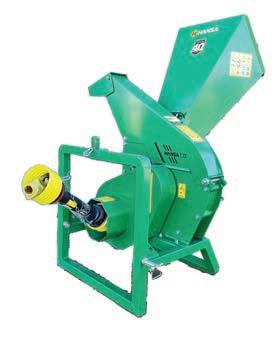





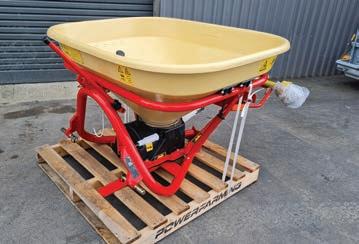
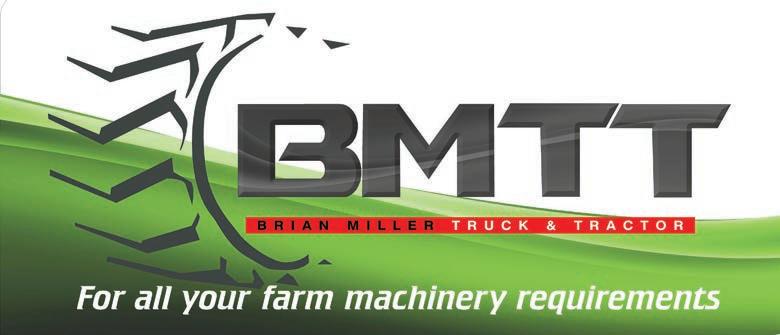


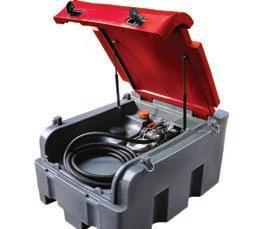

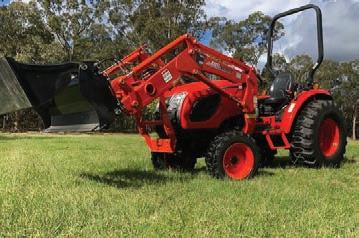

WILLIAM WOODWORTH
A revolutionary system able to repair or replace broken CCA treated vineyard timber is breaking into the New Zealand viticultural market.
The Ocloc V post repair system and the Ocloc A/AW trellis system use high tensile steel coated in Galfan, a coating of zinc, aluminium, and rare metals to make a long lasting, durable and self-repairing product for use in the hardest vineyard conditions.
Whether vineyard managers are looking to fix existing posts, replace trellis rows, or have individualised requirements for their vineyard’s terroir and growing wire setup – Ocvitti Australia’s Brian O’Malley says Ocloc presents an environmentally and financially sustainable alternative for wine businesses.
“We’ve tested our Ocloc products thoroughly, from salt testing at Bureau Veritas in laboratory conditions, to the stoniest riverbeds, driest soils and salty seaside vineyards where it’s stood up to any test”, says Brian.
“As machinery passes through vineyards, the vast majority of the roughly half a million CCA posts that break yearly in Marlborough


at the bottom,
“Ocloc V fixes posts in minutes, saving valuable time with one pass, while eliminating vineyard staff touching new CCA posts and broken wood piles”, describes Brian.
“Ocloc works on either side of half round posts, while being financially, environmentally and physically far less taxing than traditional fixes
The Ocloc V post repair system works on either side of half round posts. Ocloc New Zealand distributors Phillip Gleeson and Sam McConway from Eckford Engineering saw much interest at their WinePro booth. Photos: Supplied.
which are incredibly important factors to growers of all sizes”. While the V repair system reinforces traditional CCA posts, the Ocloc A or AW trellis post & end assembly strainer system is a total efficient long lasting vineyard development solution.
Wire slots built-in to the A/AW post design with 75mm and 150mm rounded wire spacings re-
The New Zealand Zespri kiwi season is in full swing and Jochen Wyns, Benelux Regional Market Manager, calls it ‘fantastic’. “In the first three sales weeks, a record number of kiwi trays were shipped in the Netherlands and Belgium,” he says. This success comes after what Jochen refers to as a ‘reset year’. Quality problems caused by climate issues and the pandemic marred 2022. “So, last year, we monitored all processes – from harvesting in the kiwi orchards to deliveries to our customers – and fine-tuned them where necessary. Quality is a priority for Zespri; our foundation is built on that. We, thus, keep a close eye on that with every ship and load.” In 2022, climate conditions limited volumes to 136 million trays of Zespri Green, SunGold, and RubyRed. Thanks to good weather, that rose sharply this year to 193 million trays. “Zespri SunGold’s popularity and, therefore, demand keeps growing. Zespri Green kiwis, though, are doing exceptionally well again, too, after what was a definite dip in sup-
ply last year,” Jochen explains. Everyone is happy this year, on both the supply and demand side. Despite the disappointing weather in recent months, the feeling is positive. “Last year, inflation impacted buying behaviour. Our stocks were, however, also very limited. That may have been to our advantage at the time because even then, kiwi demand outweighed the supply. Europe’s demand for Zespri kiwis rises annually, and we, of course, continue to focus on that. This year, our sales channels and shoppers are undeniably eager for the beautiful new crop.”
The recently signed free trade accord between New Zealand and the EU adds to this optimism. The deal includes eliminating tariffs on New Zealand Kiwi exports to the EU, allowing Zespri to increase its European exports. “This agreement came into force on May 1 and means that from then on, kiwi imports from New Zealand were immediately no longer subject to the 8.8% tariff. That offers us a long-term advantage, especially in our efforts to increase our exports to Europe,” Jochen concludes.
duces the need for clips and staples to hold wires.
The Australian made products are being distributed across New Zealand from Blenheim by Eckford Engineering, after managing director Phillip Gleeson was blown away by the simplicity of Ocloc V to fix posts on his personal vineyard.
“The most striking advantage being able to fix a post with one pass, but it’s also provided direct cost savings being about half the price to fix, saving on labour costs, CCA storage questions and the opportunity to repair year-round”, says Philip.
“Since having hands-on from last October, we saw an opportunity to develop an ergonomic post driving trailer mounted system with a gantry arm and spring leveller for installation.
“That system has freed up the tractors, eliminated technical training certification, met the OHS requirements, and, with Ocloc, successfully taken on the toughest Marlborough terrain”.
Phillip and Brian say that the word is getting around the viticultural community – so much so people attended the WinePro trade show to collect samples and speak with the team.
“For WinePro, we were told people travelled for nine hours for the event to get samples from our booth, which is hugely promising”, says Phillip.
“It’s the little details too, down to the Bremick Shark Tooth B8 screws supplied with the V which are eight times stronger than galvanised screws, and UV stabilized food grade plastic for the A-AW’s netting spray cap”.
“I saw a huge amount of value in coming over to WinePro, allowing Marlborough vineyards to get samples, look and feel the posts and discuss how long these posts have been in use in Australia”, continued Brian.
“We always encourage people to put our samples through the ringer and see other products inferior coating and thin seam welding wear away while Ocloc avoids that through being cold pressed”
“It’s also been great to work alongside the Eckford team for the New Zealand release, because they’ve been highly organised with refreshing ways to work out how we can make Ocloc systems even easier to install”.
For more information on the Ocloc V or A/AW, go to www. oclocnz.co.nz or www.eckford. co.nz
ELOISE MARTYN
Sixteen years ago, Shirley Wallace moved to Tasman from a sheep and cropping dryland farm in Mid Canterbury with her flock of Romney coloured sheep. Shirley had always had an interest in sheep, wool and crafts so she purchased a small flock of coloured sheep to use the wool.
After joining the Mid Canterbury Branch of the Black and Coloured Sheep Breeders’ Association she attended field days to learn as much as she could. The Black and Coloured Sheep Breeders Association of New Zealand has 12 branches nationwide, with members ranging from retirees to large commercial flock owners.
They use wool for handcrafts, sell it to artisans, produce naturally coloured wool products, and breed high-quality sheepskins. Some members are wool enthusiasts without owning sheep themselves. The Association has a strong focus on education and was ideal for Shirley’s needs.
“As a group, we visit a few flocks each year and often

go to North Canterbury to look at flocks or sheep sales which I enjoy. We also have workshops, lunches and competitions. The Association is great for education around coloured sheep for handcraft purposes and you always learn something or come away with a few ideas,” Shirley says.
Moving to Tasman, Shirley continued her membership with a new branch. She has now been the Nelson/Tasman secretary for many years and enjoys being involved. The branch covers the top of the south with members spread throughout the area.
The group also extends the education around black and coloured sheep for hand-
craft purposes to the wider community. They recently attended A&P shows around the Top of the South with samples of 10 different fleece breeds so people could see what they can be used for, and the difference in each. Alongside this, they had a free felting project for children which many enjoyed. “The Association has members of all ages including juniors. I’m a great believer in sharing knowledge and this group is a good place to do that. We welcome anyone with an interest to get in touch,” Shirley says. You can contact the Nelson/ Tasman Black and Coloured Sheep Breeders Association by phoning her on 03 526 7022


Our vendors have their eye on another property, and they are keen to sell this property to enable them to move on. They are very motivated for as long as the opportunity is available for them. This property offers an abundance of options.
The home is very large and could accommodate two families, there is an irrigation right, you could grow fruit, there is a huge workshop with 3 phase power and a hoist, perfect for an engineer and there is an abundance of sheds perfect for a contractor.
Sharyn Miller 021 377 930 sharyn.miller@bayleys.co.nz
021 377 930
The previous owners had an arena, the foundations are still here and ready for a tidy up, there are paddocks for the horse or kid’s pets, a citrus orchard and a total land area of almost 13ha so you can fatten a few head of cattle.
The home is very large and beautifully presented, all four bedrooms are double rooms, there are three bathrooms, a very impressive kitchen with scullery and two living rooms plus a craft room and an office.
A large internal pool provides all year fun and fitness for the family and is a lovely area for entertaining.
You cannot see this property from the road, it is totally private and in a sheltered basin and with a microclimate. Potential multiple income streams and self contained granny flat.
This is a wonderful opportunity for you, the options are endless Be sure to arrange a viewing. Call Lydia Heyward now




790 Four Rivers Highway Lifestyle Offers over $650,000 + Including GST reference no 4020876
232 Umukuri Road Lifestyle Offers over $2,500,000 reference no 4020874
254 Kohatu-Kawatiri Highway Lifestyle Price by Negotiation reference no 4005198
103 Teal Valley Road Lifestyle Offers over $690,000 reference no 4005194
19 Whiting Drive Lifestyle $1,749,000 reference no 4020880
Pokororo Terrace 3 Lifestyle Blocks Expression of Interest reference no 4020888
205 Pretty Bridge Valley Road Lifestyle $1,400,000 + Including GST reference no 4020737
536 Matiri Valley Road Country $2,200,000 PLUS GST (if any) reference no 4005195



There is something very special about a property that has a river boundary and even more special when the river offers a private swimming hole for your family, friends and animals to enjoy. This is exactly what this property offers along with paddocks for your pony, an arena area, firewood lot an abundance of bird life.
The home nestles into the environment, it is almost invisible from the road. The drive leads you to a large yard and the double plus carport garage is to one side and the warm and welcoming home on the other side.
A wide veranda wraps around the home and the northern side has been developed into an enclosed outdoor area with space for the bbq, large table setting and relaxing chairs.
The home has three double bedrooms heated by radiators and a very large open plan living area with doors opening to the deck. The kitchen is well appointed with a dishwasher and good storage.


A huge log burner is centrally situated and provides energy for the hot water and radiator system. Our vendor works from home and a large



portable cabin is used as an art gallery. This building is fully double glazed and heated via a heat pump. It is a few steps from




In a bid to tackle the severe lack of health professionals in rural communities, a team of tertiary students, over the week of the 24th27th of June, headed to rural areas of Tasman and Nelson to promote rural health careers to high school students.
The team visited Tapawera, Collingwood and Murchison Area Schools, Motueka High School, Waimea College and Nelson College for Girls to try and inspire more young rural people to pursue careers as General Practitioners (GPs), nurses, or other health practitioners as part of Hauora Taiwhenua’s nationwide Rural Health Careers Programme.
Hauora Taiwhenua Chief Executive Dr Grant Davidson highlights how new research shows there are large gaps in rural healthcare provision.
“Rural communities are experiencing unprecedented challenges due to climate change, economic uncertainty, and a healthcare workforce that is stretched to its limits. Improving outcomes requires a strong, resilient rural health workforce. We must equip and encourage our rural rangatahi to serve in our rural regions, and this programme is a pivotal step towards engaging rural youth in healthcare careers,” he ex-
plains.
Using the energy and enthusiasm of tertiary students on health training pathways is a great way to expose rural youth to possible health careers. Providing the opportunity for youth in rural areas to discuss career options with tertiary students near their own age is a great way to motivate and educate them. It is also a practical way for tertiary health students to give back, with many from rural backgrounds sharing their real-life experiences.
Karis Gordon, a Dietitian student on the April programme, spoke on how she was able to connect with kids in rural areas and show them a career they might not have considered otherwise.
“I am a student dietitian, and almost none of the kids ever considered it as a career, and neither did I when I was their age. It was also so valuable to let these kids know that their first idea may not work out, but there are so many avenues in healthcare and that they were all capable. It was so special, and something I wish I had been able to see when I was in school,” she says.
The interactive workshops were well attended, giving hands-on experience with medical and dental equipment and a chance to talk first-hand with young people who have already embarked on this journey.


• Welcoming family environment
• High-level academic and leadership programmes
• More than 30 different sports options
• Year-round activities across the Nelson/Tasman region
• Competitive rates with no school fees

Back in 1996, the Hon Jim Bolger, Prime Minister from 1990 to 1997, stated that ‘New Zealand is now an Asian country’. The Asian percentage of the New Zealand population is certainly continuing to increase, and Asia is now our second most important economic region. So, it is interesting that it has taken so long to accept and adapt Asian farming practices and practical examples we can learn from.
When you travel in Asian countries, you see various farm activities all the time. Rice is common, and while paddy fields are not suggested, dry-land rice could be an alternative cereal crop with varieties bred for difficult soils and colder climates where it is commonly grown. Hemp is another common crop – hop strings anyone?
Bamboo, a widely used plant in many Asian countries with significant potential in New Zealand. Its versatile construction uses and rapid growth rate, capable of reaching five metres in a year, also make it a promising candidate for carbon credits.
Bamboo is also used in clothing, food, flooring and farm shelter. Incorporating bamboo into our agricultural practices can make significant strides towards our sustainability goals. It’s time for the government to recognise this opportunity. What about freshwater fish farming in some of the dams, small and big? The Waimea Community Dam, which seems to have currently ignored hydroelectric potential, is a body of water that could be exploited. A species like a catfish that is commonly farmed
elsewhere is not welcome, but there are other species that can be farmed profitably.
Goats provide meat to more people in the world than any other meat. The local word for sheep and goat is often the same in many Asian countries, and there are as many goats as sheep in China, which has been the focus of New Zealand’s red meat exports in recent years. We now know how to pastorally farm goats profitably, and they have other roles, such as biologically controlling weeds. Added fibre returns are a further incentive, and farmers can basically use existing resources without any significant capital input.
Another pasture eater is the flying bovine — geese with an early growth rate faster than other poultry to produce meat and a goose down bonus. They can be stocked at up to 150 birds per hectare and even break-fed on pasture behind electrified netting. They can be highly prolific, and New Zealand has the huge advantage of no native predators; they can supplement their plant protein with snails, slugs and insects reducing pasture growth. Captain Cook’s liberation of geese and goats failed but is not a reason to ignore them now.
We share common interests in the growth, stability, and security of the Asia Pacific region. Our countries are economically interdependent, and this will only strengthen in the future. By adopting some of the efficient and profitable Asian farming practices, we can not only enhance our agricultural sector but also contribute to the economic prosperity of the region.
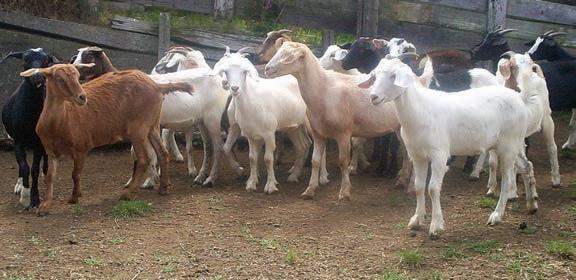
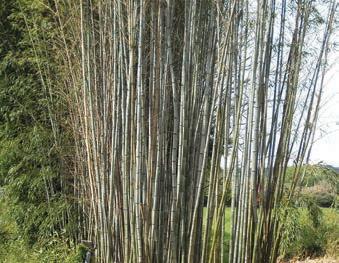
The Ministry for Primary Industries (MPI) is investing in the development of an integrated pest management approach to safeguard New Zealand’s maize and sweetcorn industries against fall armyworm.
“We’re collaborating with the Foundation for Arable Research, Process Vegetables NZ, Vegetables NZ Inc, and growers on management and mitigation strategies to help reduce production losses and enhance resilience to this invasive pest,” says Biosecurity New Zealand Deputy Director-General Stuart Anderson. “Together we’ll develop some really good tools for growers, including establishing surveillance networks on a national scale.”
Fall armyworm is believed to have blown over to New Zealand from Australia after a cyclone in early 2022. After a year of battling the pest, MPI and industry partners agreed to close the response and shift the focus to long-term
management of the pest by industry. Fall armyworm has the potential to impact 72,490 hectares of maize, with an estimated value of more than $480 million and 3,320 hectares of sweetcorn production, with an export value of $36.9 million.
“We don’t know what the full impact of the fall armyworm incursion will be in the future as it depends largely on our winter temperatures and suitable host plants in the absence of maize and sweetcorn,” says Ashley Mills, Biosecurity Officer, Foundation for Arable Research (FAR). For instance, in areas with warmer winter temperatures such as Northland, the insect has the capacity to overwinter and survive all year round. With warming temperatures, we might expect the problem to grow year on year. Part of our research will be to identify gaps of knowledge around the winter growing season and dispersal of fall armyworm. We’ll produce models and come up with early warning tools for agronomists and growers, so they understand when they need
to employ their most intensive management strategies,”
“There’s no one-size-fits-all solution, and approaches may vary according to factors such as region, climate or soil type. In most cases, encouraging beneficial insects will work, but in more problematic regions or localities, insecticides might be needed, and the timing of application will be important. Over the next three years we’ll focus on understanding fall armyworm phenology and distribution, developing New Zealand specific economic thresholds and finding long-term solutions that reduce reliance on agrichemicals, and preserve soil health, water quality and biodiversity.”
FAR and Vegetables NZ Inc will host information and tools for fall armyworm management on their websites. This will include modelling, distribution maps, guidelines, and training videos. FAR will also host workshops over winter, tailored to each region. Stuart Anderson says engagement with growers will be an essential part of the programme.





More than 90% of fresh vegetable growers by value have voted to continue to support the work of Vegetables NZ through the fresh vegetable commodity levy.
‘The weighted dollar value of those in support of continuing the levy was 92.51% in the referendum,’ says Vegetables NZ chair, John Murphy.
‘Furthermore, 38.64% of eligible growers voted, with is more than double the percentage of growers who voted in 2018 (16.5%).’
John says Vegetables NZ’s immediate focus is on making it easier for growers to do what they do well – grow fresh, healthy vegetables for New Zealanders to enjoy.
‘We need to make sure vegetable growing – as a permitted activity – is nailed down as much as possible, so growers can continue to grow in the right way and bring beautiful fresh product to market.
‘Once that happens, it will take some of the pressure off growers, giving them the confidence and mental space to innovate and expand to meet increased demand.’
The next step in the levy renewal process is to make a formal application to the Minister of Agriculture to renew the fresh vegetable commodity levy order for another six years. The Minister is expected to make a decision by the end of the year.
MAUREEN PUGH
Only around seven months into the coalition Government and although there is still a lot to get done, you will have noticed a lot of work has gone into helping the rural sector. We’re proud of what we have been able to do in this relatively short time.
- We have listened to farmers and growers on slashing red tape. We’ve scrapped the Ute Tax and we’re making changes the RMA including the intensive winter grazing repeal, stock exclusion changes, and suspension of SNAs.
- We ratified the EU-FTA and are negotiating another FTA with the United Arab Emirates to boost our export industry. This is part of our ambitious commitment to double NZ exports by value within ten years.
- Recently some significant business deals were closed

• Monitor & optimise herd health post calving
• Intuitive, multi-user, accessible anywhere software
• Easily, quickly understood & actionable insights
• Simple plug'n'play set-up
in Japan in the space, renewable energy and investment areas.
- We are taking agriculture out of the ETS, establishing a new Pastoral Sector Group to tackle biogenic methane, and investing in R&D to lower on-farm emissions.
- The Government is helping farmers eliminate the devastating impacts of facial eczema through a $20 million partnership jointly funded with Beef + Lamb NZ and the primary sector.
pendent review of the methane science and targets, particularly in understanding no additional warming from agriculture.
- The Fast Track Approvals

- We have begun work on replacing the National Policy Statement for Freshwater Management 2020 and have given an extra 3 years to notify on freshwater plans.
- This Government has committed to changing the hierarchy of obligations for Te Mana o Te Wai.
- We’re undertaking an inde-
Bill that is currently at the Select Committee stage in Parliament is a key step in helping to rebuild our economy by making it faster and simpler to get projects consented and actually under way.
The Fast Track Approvals
Bill will cut red tape to help speed up development and make it easier to build the infrastructure we need to rebuild our economy. This Bill creates a ‘’one-stopshop’ process, making it quicker to obtain consents and resource permits for significant projects. The Bill makes sure that the environment is protected, by allowing an expert panel to attach
specific environmental conditions and rules to projects. We are open to sensible suggestions to refine the regime and we will be looking carefully at the feedback from select committee.
Recently, politicians from all sides of the House, including myself, have been subjected to verbal and sometimes physical abuse. Protestors have a right to protest but not to go outside the bounds of robust discussions and exchanges of ideas. This is generating discussion about how MPs ensure our safety when out and about. Incidents like those I experienced in Takaka will be reported to the police. Violence and abuse towards anyone is not tolerated. The coalition Government knows we need to keep working hard to get our country back on track by rebuilding the economy. Thanks to our primary producers for the big part, they play.



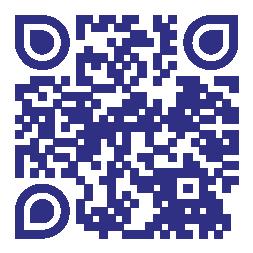
Congratulations to Anna Kelland from Constellation Brands who became the 2024 Marlborough Young Viticulturist of the Year after a challenging competition held at Whitehaven in Rapaura.
Congratulations also to Liv Bishop from Delegats who came second and Laura Hammond from Babich who came third.
“Seeing three bright, young women take out the top places, highlights that viticulture is very much an exciting career option for both women and men” says Nicky Grandorge, who heads up Young Viticulturist and Women in Wine as part of her role at New Zealand Winegrowers.
This year there were ten contestants, two more than the usual eight, adding to the excitement as everyone arrived at dawn for the big day in the vineyards. The other contestants were Dan Du, Lizzie McMullen, Eric Bryan, Nav Sandhu, Andre Dippenaar, Harrison Chou and Harry Watson. Several judges remarked on the inspiring talent this year, de-
scribing them as “a very bright, enthusiastic bunch of young vits”. It was a crisp, frosty start to the day but contestants and judges were rewarded with a stunning sunrise and soon warmed up around a fire pit and coffee van before the competition kicked off.
The young viticulturists circulated around various challenges and theory papers testing them on trellising, pruning, irrigation, machinery, pests and diseases, budgeting and sitting an interview.
The BioStart Hortisports took place in front of a large wine industry crowd who came to support the young vits at lunchtime and enjoy a sizzling BBQ cooked by the Fruitfed Supplies team. The contestants finally delivered a speech that evening at the Awards Dinner and had a quick-fire quiz before the final scores were tallied up. The evening also included the launch of the Geoff Warmouth Cup which will be awarded each year to the winner of the BioStart Hortisports. This was introduced in recognition of Geoff’s pas-

Liv Bishop who came second in 2024 Marlborough Young Viticulturist of the Year after a challenging competition with Anna Kelland who took the title of 2024 Marlborough Young Viticulturist of the Year. Photo: New Zealand Wine
sionate work in stretching the contestants in this head-to-head race. Geoff has been rustling up
a wide range of gruelling and fun challenges almost since the start of the competition and the race is


one of the highlights of the competition. Geoff presented the cup to this year’s winner Liv Bishop from Delegats. Brodie Kane was the guest speaker and amused the audience with her tales of competing in various events. Anna Kelland will now go through to the National Final to compete against representatives from other regions around the country. The National Final will be held at Escarpment Vineyards in Martinborough on Wednesday 28 August. The 2024 Young Viticulturist of the Year will be announced at the Altogether Unique 2024 industry celebration at Te Papa on 29 August. There were some great prizes won across the board including a Fruitfed Supplies Field Trip and $1,000 for Anna. Liv Bishop won $750 cash and an NZSVO Educational Trip. She also won the Ecotrellis trellising section prize as well as the BioStart Hortisports. Laura Hammond won $500 cash along with other section prizes. The Ormond Professional Reputation Award went to Dan Du from Whitehaven.

STUART SMITH
MP for Kaikoura
As an electorate MP, I am always fielding complaints about excessive rules and regulations and for the most part, those complaints are justified. What really brought this home for me was watching ‘Clarkson’s Farm’, which is a Prime TV series on English television personality Jeremy Clarkson, who takes over the management of his arable farm.
Located in Chipping Norton in the Cotswolds, it is considered to be the walking and exploring
capital of England and is a protected landscape recognised as an Area of Outstanding Natural Beauty (AONB).
Jeremy is determined to innovate and to sell the bounty of his farm’s production directly to the public. He builds a farm shop and restaurant which constantly is thwarted by a never-ending list of rules and regulations. His attempts to innovate with environmental projects stumble with the same hurdles stifling the very goals they were put in place to achieve.
Jeremy’s frustrations will be fa-
miliar to our farmers, but these experiences are not just due to the rules and regulations, they are made worse by overly rigorous interpretation and enforcement. That is why we established a Minister for Regulation to oversee the reduction of rules and regulations, allowing a culture of enabling innovation to flourish in New Zealand.
Much has been written about localism where the local control of government decision making is made closer to the coal face, which is a worthy objective. However, the interpretation and
enforcement of regulations and rules are just as important, as was demonstrated in one episode of Clarkson’s Farm. Jeremy’s application for a farm restaurant was turned down in a hearing of local Councillors on spurious grounds, so localism alone will not deliver results.
It is the incentives that must change. Councils need to benefit from the innovation and development. When considering a worthy application to build a farm shop or restaurant for example, Councils need to consider how they can help get the application
across the line, rather than why it can’t be allowed to go ahead. I am not advocating for a laissez-faire system. I simply want an enabling system of rules and regulations where innovators and economic development are not only enabled but celebrated. This will drive economic growth which in turn will give us better incomes and a higher standard of living. The cultural DNA of New Zealanders to do-it-yourself, to invent, to create and innovate is to be encouraged and supported as we strive for a resilient, diverse, and sustainable economy.
NIWA has completed a major project to analyse how New Zealand’s “climate normals” are shifting. Climate normals are 30-year averages for variables such as temperature and rainfall. They are a baseline to describe the current and expected climate in a given location, such as if today’s temperature in Wellington is above or below average for that time of year. NIWA scientists have completed a study on how the nor-
mals in New Zealand are changing and whether the methods used to calculate them can be improved.
Climate Database Scientist Raghav Srinivasan says that climate change is making researchers around the world reconsider how we approach climate normals.
“Climate change means we are living with rapid shifts in global and regional climate patterns, so we need to better incorporate these variations when we calculate climate normals. Physical processes such as El Niño and La Niña can
have significant influence on the year-to-year variance in seasonal rainfall and temperature too, particularly in New Zealand, meaning they must also be integrated into our calculations,” said Mr Srinivasan. To help mitigate this, countries including the USA have started using additional alternative normals, such as updating them on a rolling annual basis, to more quickly capture the dynamic changes that our climate is exhibiting. Currently, the World Meteorological Organization requires

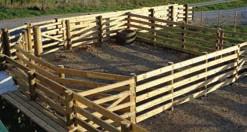

countries to update their climate normals only every ten years.
“A good case study for New Zealand is that under current 10-year update cycle of the normals, the rainfall totals from Cyclone Gabrielle won’t be factored in until the early 2030s when the 2001-2030 normal becomes available. With such extreme events expected to become more common, it would likely be advantageous to add more frequently updated normals to serve as a better reference for future events,” said Mr Srinivasan.
Because normals change after each update and the long-term warming trend, it also means that today’s temperature difference from normal becomes less stark than if it was compared to an older time period. For example, the daily mean temperature in Auckland on 21st June 2024 was 12.1°C. When this temperature is compared against 1941-1970, it is 0.9°C above normal, whereas when compared against 1991 - 2020, the value is on par with normal.
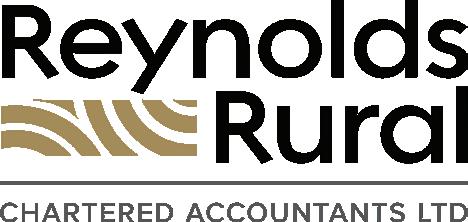








With the middle of winter upon us, Fire and Emergency crews across the region have been responding to an increased number of house fires with catastrophic consequences. The most recent fire saw a rural home in the district reduced to rubble, thankfully the occupants had working smoke alarms, and everyone was able to escape safely. It is always tragic to see homes lost, especially in our own backyard, but we are always heartened by the support communities provide and the hard work firefighters put in to fight these fires. Unfortunately, this is not the only fire we’ve tackled in the last few weeks and crews across the country are experiencing similar. The tragic loss in Manapori recently highlighted just how serious the risks are, especially with no working smoke alarms in a home. This fire was most likely caused by a heater coming into contact with
flammable material, likely bedding, the fire investigator concluded. It is a stark reminder of just how easy house fires can happen, even to those of us who consider ourselves fire safe and well protected. The good news is, many of these fires can be prevented and avoided with a few simple actions. Make sure you have working smoke alarms in every bedroom as well as living areas, ensuring if a fire were to happen while you were sleeping you would be alerted with plenty of time to escape. Consider what your escape plans might be if you needed to get out quickly and how you could account for everyone being safe.
As we keep the fires burning through cooler days, ash buckets soon fill up. It’s important to always use a non-flammable, metal bucket for cool embers and ensure it sits in that bucket for at least five days. Embers stay warm and can be easily collected by a small breeze, so filling the bucket with cold water and covering it, if possible,
will protect your home from being at risk of a fire starting either indoor or out. Remember to keep all items at least a meter from the heat source, whether that be a fire or heater to avoid things catching alight.
Even though its winter, wildfire is still a threat especially for more isolated communities so remember to check weather conditions before deciding to burn material and always ensure you have a good water source and plan for using it before you light.
Remember our brigades can sometimes take a while to reach you if you’re living more rurally, so prevention is key.
While some of these may seem simple, they are the difference between a life saved and one lost, so it’s important to chat with your family and team about how you’re keeping the crew fire safe this winter. If you’re looking for further advice or more detailed information, check out fireandemergency. co.nz for more, or contact your local fire station.








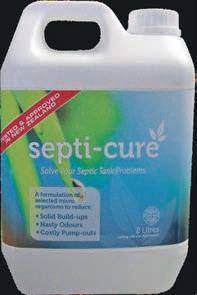
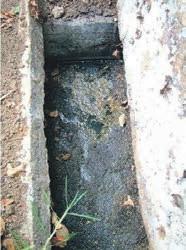




ELOISE MARTYN
Nationwide, dairy and beef cattle, sheep, horses, and alpacas deposit around 100 million tonnes of dung annually.
Yet New Zealand hasno dung beetles that can utilize dung in open pastures, which is something Dr Shaun Forgie, with the help of Top of the South farmers, is committed to changing.
New Zealand has 15 native dung beetle species, but they are all forest dwellers and, because modern farming was only introduced
around 150
years ago, our local beetles have not evolved to process the dung of domesticated livestock, nor for living on grassy pastures.
Dr Forgie, along with business partner Andrew Barber, formed a Dung Beetle Release Strategy Group, and armed with evidence in support of pastoral dung beetles, had their first win in February 2011 when the release of dung beetles in New Zealand was finally given the official green light by the Environmental Protection Authority. However, it took a further two years of continual reassessment
Over the past three years, the Morrisons’ dairy farmers at Linkwater, along with four other dairy farmers in their area, have been releasing dung beetles as part of a seven-year dung beetle plan.
“The beetles are fascinating creatures of all different sizes and colourings,” says Nigel Morrison.
“It’s all new to us and we are enjoying being proactive in keeping soil pro-
before the first 500 dung beetles would take flight in their new home, a dairy farm in Gore, in 2013. This was followed by a further 200 releases across New Zealand.
This success saw the two men launch ‘Dung Beetle Innovations’ in 2014 and they have continued to expand as more farmers and growers come to understand the benefits dung beetles offer.
“We have specifically selected dung beetles on farms in Linkwater and Karamea,” Dr Forgie says. Because dung is produced continuously by pastoral livestock throughout the year, one species of dung beetle alone is incapable of achieving suitable control.
“The Linkwater farm has four varieties for annual control and Karamea has three varieties suitable to the increased rainfall,” Dr Forgie explains. Dung beetles are separated into three broad groups, according to their lifestyles, dwellers, rollers, or tunnellers.
“When it comes to removing dung from the surface, tunnellers
files and water quality up as well as hopefully drainage improvements.”
“We are three years along and we can see where the beetles have been in the dung which is a good sign. One of the neighbours was out spotlighting and saw several flying around which is encouraging. With five farms involved, we should have a good spread in the area and start to see the benefits around year five.”
conditions. They make dung balls, but they tunnel beneath the pat and bulldoze the dung underground. Image: The Morrison family.
are the most effective for our conditions,” Dr Forgie says. “Tunnellers make dung balls, but they dig tunnels beneath the pat and bulldoze the dung underground.”
Dung beetle benefits include improved soil health and reduced runoff, increased pasture productivity and water quality, reduced infection of livestock by parasitic worms, reduced fly pests and human disease, reduced greenhouse gas emissions, and other economic benefits.
“We have seen our neighbours in Australia have great results, they are an example of the many benefits dung beetles can offer,” Dr Forgie says.
Australia imported dung beetles in the early 1960s to help control buffalo and bush fly numbers (which breed in unburied cow dung) which proved successful and brought other benefits to soil, water, and pasture. The hospitality sector benefitted as well with customers being able to eat outdoors with a huge reduction in fly numbers. Recently, the West Australian government estimated the
services provided by dung beetles contribute $1billion to its regional economy each year.
Dr Forgie says that, nationwide, there is more emerging evidence around the improvements dung beetles can make to water quality.
“Riparian plantings are important but have little effect in stopping overland flow of contaminants during high rainfall. Dung beetles can hugely improve water quality long-term as well as offer farmers and growers all the other benefits.
“Livestock manure is a free sustainable fertiliser and carbon resource if it is buried,” Dr Forgie says.
“Dung beetles are a great solution to many challenges landowners are facing,” Dr Forgie explains.
“With government support, we could fix a lot of things in this country, starting with improving water quality by 80 per cent.”
Dr Forgie is seeking financial support from philanthropists and/or government to cover all of NZ with dung beetles in the next 10 years.
A handful of farms in Karamea are in their first year of releasing dung beetles with two colonies already released, including dairy farmer Peter Langford’s farm. Peter says he was inspired, and his curiosity spiked, after attending a ‘beetle releasing’ on a local farm around two years ago.
“At the local farm they talked about the effects of dung beetles on water quality, pasture and soil aera-
tion, and it sounded like all good things to us, so we got involved and via the Karamea Catchment group encouraged other local farmers to get involved,” Peter explains.
MPI got behind the initiative and various farms in the Karamea area are making their first releases due to MPI’s support.
“We are on a long-term plan and waiting for the beetles we have released to get ac-
tive and start to reproduce to achieve all-year-round dung control,” Peter says, “They are pretty secretive creatures that work in the evenings and early hours of the morning.”
“When you look under the same cow pat the following day you can see signs of their tunnelling which is a very encouraging sign that they are active. We are on the right track,” says Peter.

I spoke last week at a catchment group gathering in the North Island organised under the name of Wai Kōkopu. It was a gathering of farmers, local government representatives and staff along with representatives of Fonterra and Zespri who process most of the dairy and kiwifruit from the Bay of Plenty region.
It was a very useful and insightful forum where the realities of the international marketplace were bought before us by two of our biggest exporting companies. The importance of carbon reduction, biodiversity, labour rights and ethical production have come together under a general heading of Nature Plus.
The high value markets including China that we export into are increasingly looking for reassurance that our production systems have less impact on the environment and in many cases contribute positively to the nature surrounding us.
There has been much noise and reassurance from the National-led coalition government that farmers will not face the ‘burdens’ of regulation & compliance that the previous La-
bour government supposedly imposed upon them all. Neither I nor the presenters focused on politics and its effect on farming, but the realities of market influence were part of the healthy discussion.
One question came from the audience asking why we had to do more than the basic requirements to meet market expectations? My view has always been that New Zealand needs to be ahead of our competitors in every aspect of our production systems. Our ancestors were able to achieve this through innovative farm practice, number eight wire and the benefits of a moderate climate with predictable seasonal patterns. Those advantages have all but disappeared and like most of our competitors we face ever-changing and more acute climatic events. This makes management of biological systems and farming far more challenging and expensive.

mium quality protein, goods, and services in an international environment. The last three decades of trade liberalisation leave us facing far more direct competition meaning we must continue to seek out areas of unique competitive advantage. These include leveraging the use of our pasture-based systems, that produce tasty and nutritious products from well cared for animals.
We must create a premium for our products, so that Kiwi farmers can realistically achieve profits in the face of costs that will inevitably increase over time. Returns will continue to be squeezed by international consumers, supermarkets and competitors who do not wish to see Kiwi products alongside theirs in the supermarket shelves.
by
Mike Joy
Bridget Williams Books $39.99

TONY ORMAN
Dr. Mike Joy is well known as a freshwater scientist and tireless advocate for clean, fully flowing, freshwater. In 2011 he was thrust into the spotlight when a BBC Hardtack interview challenged then Prime Minister John Key over NZ’s “clean green” marketing brand relative to pollution and quoted Mike Joy. He’s been in the firing line ever since.
To remain competitive and relevant, we must attempt to be ahead of our competitors and be the preferred supplier of pre-
We have no option other than to strive to be the best of the best in food production, just as we always do on the rugby field in every single game the Black Ferns play. Let us strive to be the best country in the world, producing the best products and services in the world.
This book deals not only with the author’s advocacy and the political shenanigans that can occur with politicians, government departments and even scientists but in the first few chapters, also with his early career which even featured a SIS spy position.
It’s an engaging book particularly around political deceit and deception, irrespective of which side you’re on.
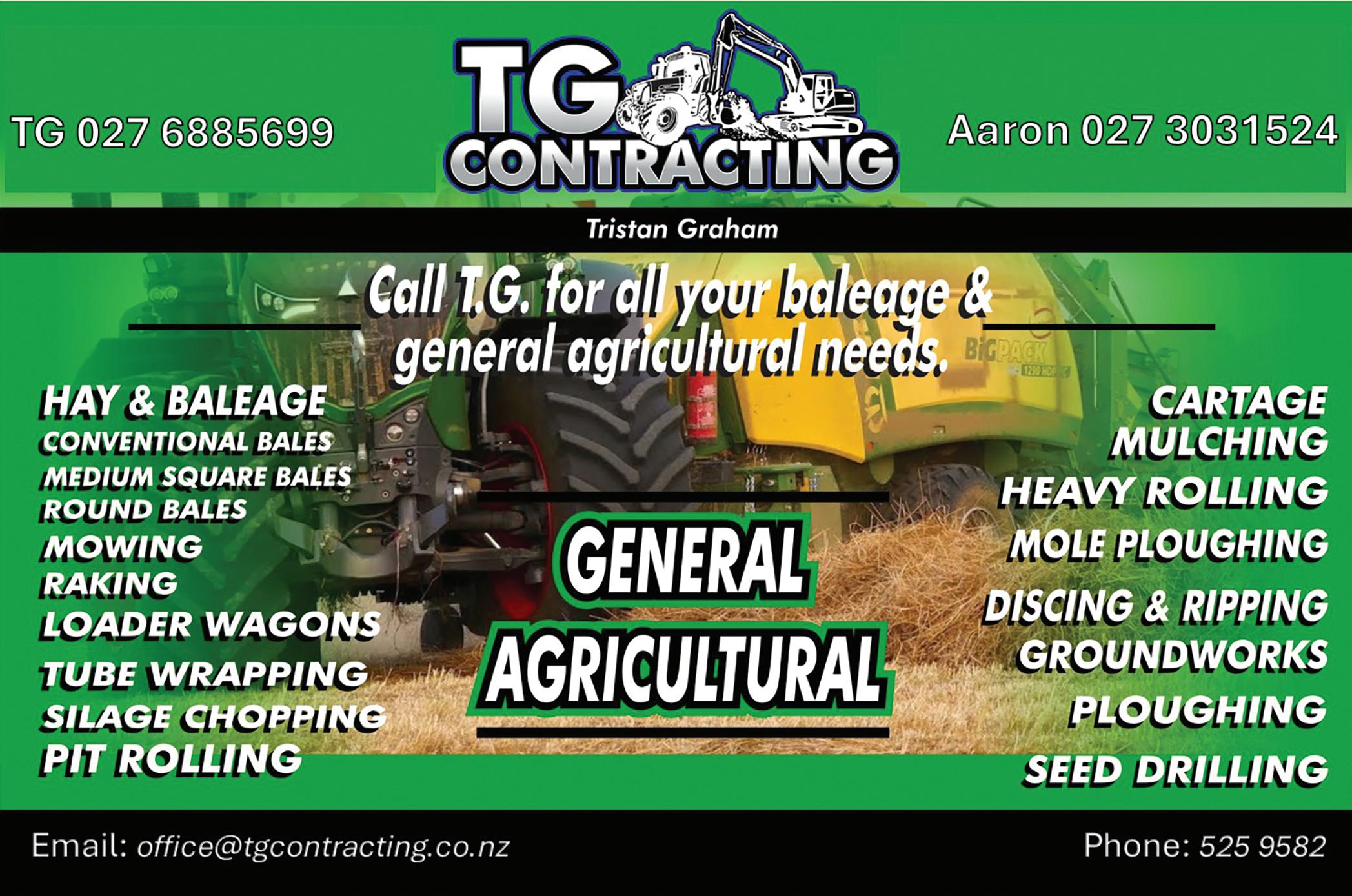





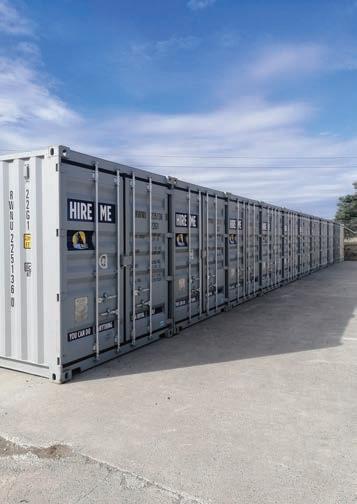
If you have a title that was in grass but is reverting to native bush we may be interested in buying it.
No vehicle access, wetland, steep, gorse, not a problem.
Contact: admin@forestherbs.co.nz



The fact that permanent grazed pastures grew significantly more total feed over a twelve-month period prior to the widespread use of nitrogen is, for most, an uncomfortable one.
It is largely dismissed by farmers and advisors; however, it remains a fact and those that are prepared to at least consider it a possibility place themselves in a position to outperform their peers and prosper financially as a result.
Farming is a competitive industry with those in the top 5% enjoying financial benefits not available to the those battling to break even, and that’s not a new situation. We protect ourselves from self-examination by believing that anything new is better than what has gone previously however lurking in the depths of our consciousness is a little doubt, and that’s essential.
pasture growth is always valuable, it’s not just data collection that’s important, it’s how it is interpreted that is key. There is little that can be done to lift pasture performance between now and the critical second half of September. That’s already been determined by pasture management, and soil fertility inputs in autumn. However, a lift in pasture grown from November onwards can be promoted by tailoring a spring nutrient application that favours clover growth.

Economies have strengthened and societies prospered over the last 50 years as new technologies have been adopted, but growth is seldom linear. There are always bumps, bruises, and stubbed toes along the way with those learning from the pain now well placed to enjoy a prosperous future. Even a modest increase in annual pasture production, from say 11 tonne DM/ha to 12 tonne is worthwhile when achieved at no extra cost. With an increase in volume comes an increase in quality with higher energy levels, less nitrate, better mineral uptake resulting in improved animal performance.
CalciZest from Functional Fertiliser was formulated to stimulate clover growth
Photo: Supplied.
The priority is providing extra plant available calcium as clovers contain 3 – 4 times more calcium than grasses. Synthetic nitrogen strips calcium from the soil so withholding nitrogen is essential. It’s also important because clovers fix nitrogen in response to steadily declining plant available levels. Soil temperatures above 20°C retard grass growth however those same conditions stimulate clover. They harvest more sunlight, creating energy rich feed ensuring higher levels of production and more rapid weight gain. A clover dense mat reduces the loss of moisture during prolonged periods of hot weather and should conditions be kind, high quality nutritionally dense hay can be harvested.
Reducing costs provides a double whammy. Less time spent with poor performing animals provides time for extra observation, a critical component of superior performance. Scheduling time to monitor
CalciZest from Functional Fertiliser was formulated to stimulate clover growth. It’s a solid product containing soft carbons, calcium, and a wide range of selected microbes. It’s typically applied at 400kg/ ha through conventional ground spread equipment and helps ensure, along with sound grazing management, a lift in both summer and early autumn pasture growth. Essential phosphorus, potassium, sulphur, and trace elements may be added as required. For more information call Peter on 0800 843 809 or 0274950041.
CalciZest.
Carbons and selected microbes for increased plant growth and optimum soil health.
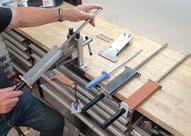
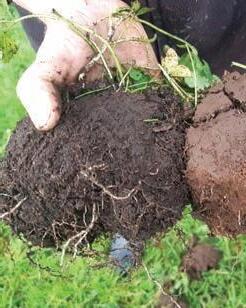
DoloZest. Also applied from a spreader, Dolomite is a natural soil conditioner. A synergy is created by blending with the unique Zest component which makes it a fast-acting magnesium fertilizers and kick starts the process of building soil humus.
This fertiliser can be used in conjunction with a total nutrient programme.






Productive and progressive dairy farm
This extremely well appointed and productive dairy farm offers 125 Ha milking platform, currently producing an average of 170,000 MS per annum, with a further 40 Ha approx. of support or dry stock land. This is a real opportunity for a buyer to benefit from all the current owners hard work and capital improvements from the large concrete feed pad, upgraded 44 bale rotary shed including in bale auto teat spray and in shed feeding, upgraded weeping wall effluent system and huge storage pond, effluent irrigation as well as standard irrigation, upgraded lane ways, extensive re grassing and capital fert application. Accommodation is via 2 dwellings with the main being a large 4 bed, 2 bathroom family home that has also undergone some renovations.
Over $5,150,000 + GST (if any)

Toby Randall M 027 233 9170
toby.randall@harcourts.co.nz



Unveiling paradise: your exclusive sanctuary
1809 Motueka Valley Highway, Ngatimoti
Nestled in the sunny Motueka Valley, this remarkable property invites exploration. Spread over 166Ha, it offers diverse recreational opportunities, from walking to hunting, amidst stunning natural scenery. 122 Ha of grazing land, adorned with mature trees, complements recent upgrades like fencing and a solar stock water system. The land includes approx. 15 HA of forestry and a further 38 HA regenerating native bush, promising potential passive income through the ETS. A charming 4-bed, 2-bath cottage features rustic amenities and overlooks lush gardens. Ample shedding, including a 312m2 workshop, adds practicality. With multiple titles, there’s room for additional dwellings or subdivision, enhancing its allure. Discover this piece of paradise, where the true essence transcends photographs, offering a genuine connection to New Zealand’s beauty.
If you want to own this piece of paradise, get in touch now!

Randall

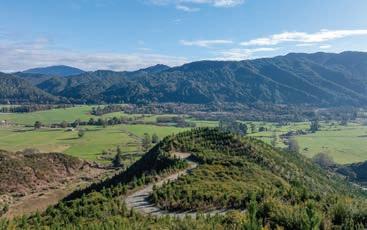
Carbon Forest Investment Opportunity with Added Recreational Benefits! Situated approximately 4km south of Murchison, discover an exceptional investment opportunity with additional recreational advantages!
Key Features: Of the 92 Ha total Approx. 69 HA of 2nd rotation Pinus Radiata planted in 2021. 30.8 hectares registered in P89 Stock Exchange ETS. 38 hectares registered in P89 Averaging ETS. Fully developed tracks and skid sites. Solid income potential from Carbon credits and future timber harvest. This fantastic property overlooks the Matakitaki River, Kahurangi National Park, and surrounding ranges, offering excellent hunting, walking, and recreational opportunities. Consider building a bach, hunting hut, or permanent residence, and enjoy the amenities of the nearby rural town of Murchison.
+ GST ( if any)
Licensed Agent REAA 2008

Toby Randall M 027 233 9170
toby.randall@harcourts.co.nz

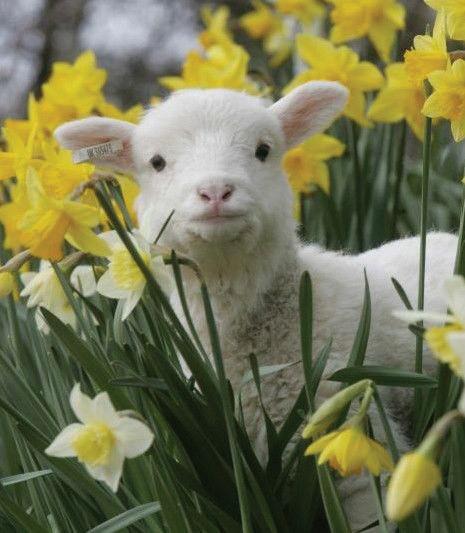
Can you believe Spring is almost here! From all accounts it looks like we are shaping up for a good season, despite the turbulent times and weather we have had —banks are starting to sound more positive, the weather gets better and traditionally we see an increase in listings and most importantly sales!
If you’re considering selling your Rural or Lifestyle property, talk to us today to see how we do things differently.



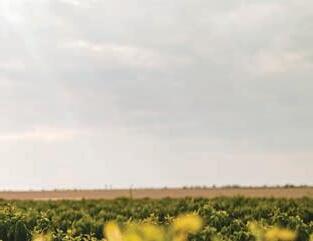

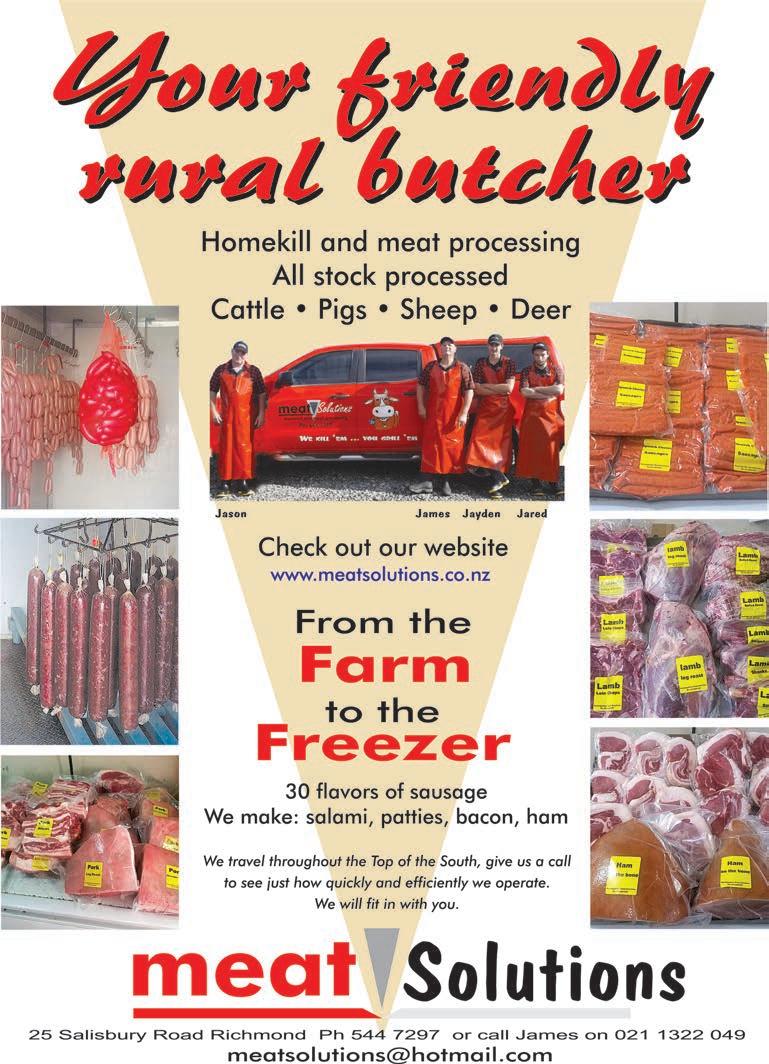

25 Salisbury Rd Richmond Ph 544 7297 James 021 1322 049 meatsolutions@hotmail.com

Based in the South Island, John has a background of over 30 years in AgriBusiness, Banking and Leadership.
As a shareholder of Rural Coach and a background of over 30 years in AgriBusiness, Banking and Leadership experience in New Zealand and Australia, John’s experience and empathy with the rural sector, as well as having been an equity partner in a Southland dairy farm, helps in understanding what’s important for individuals, teams, families and businesses, including the challenges and opportunities around inter generational change and succession.
He believes coaching is a core competency for effective leadership and is well


positioned to add value through providing independence, listening to understand, helping clients gain clarity around the outcomes they want for themselves, their teams, family and business and working with them to develop the roadmap strategies to get there. This clarity leads to a more effective strategy and structure including the investment in key people, communication, and decision making processes, business plans and governance.
John brings his experiences to the table underpinned by the coaching process to make a difference.
Available for a confidential no obligation chat anytime.
Tasman | Nelson | Marlborough | North Canterbury john@ruralcoach.co.nz

I’ve been working for Federated Farmers for four and a half years now. My job title is a mouthful- Provincial Sales & Engagement Advisor – which simply means that I try and engage with rural communities and farmers on the virtues of becoming a Federated Farmers member.
Eighteen months ago, the area I cover was extended, to include Marlborough, Nelson, Tasman and Golden Bay, since then I have been visiting these areas every six weeks. Alongside this I continue to cover North Canterbury and the rest of Top Of South Island.
Federated Farmers are 90% funded through their membership fees with currently 12,500 members nationwide, 400 of those being spread out amongst the Top of the South provinces.
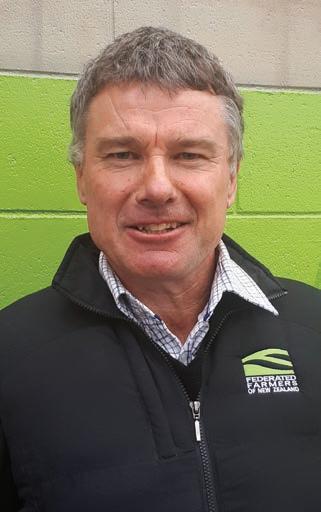
One of the great parts of my job is the feedback - some of it can be colourful, to say the least. With so much been thrown at farmers and the farming way of life these days, Federated Farmers and its members have a very important role to play in the future direction of New Zealand farming.
If you have any questions about Federated Farmers, the work we do or what benefits you gain from being a member then get in touch, I’d love to hear from you.
Harry Matthews
Golden Bay, Nelson, Marlborough & North Canterbury T: 0800 327 646 M: 027 507 8901
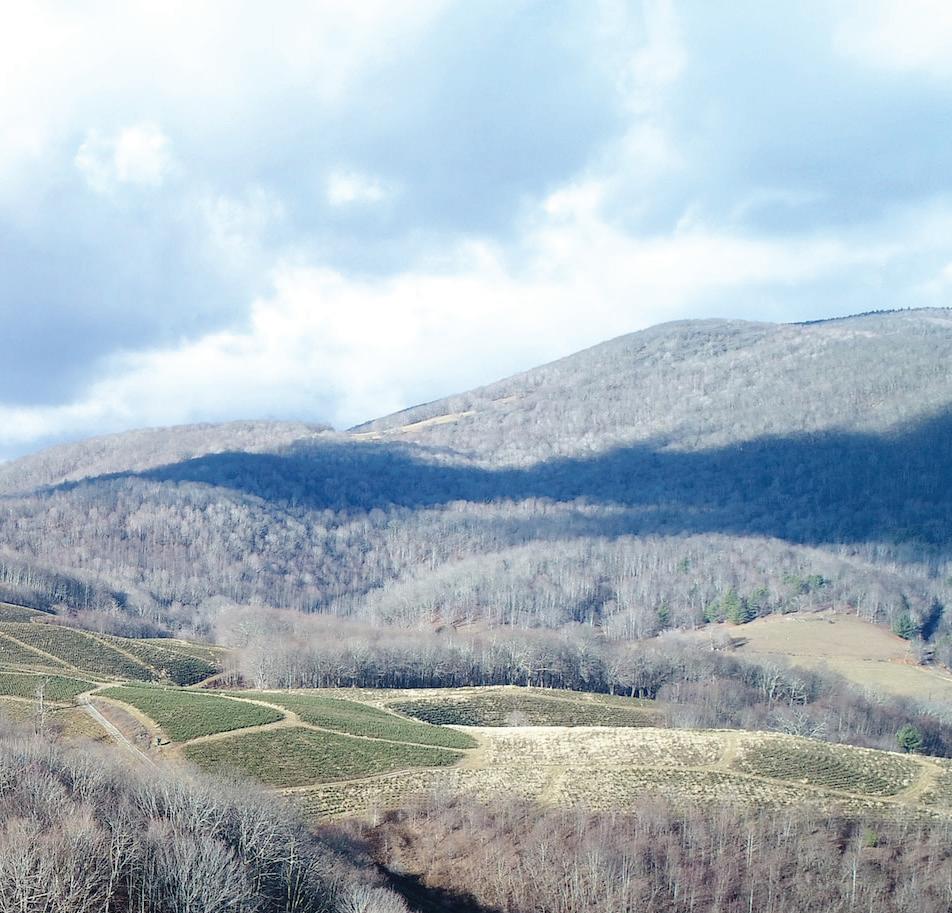



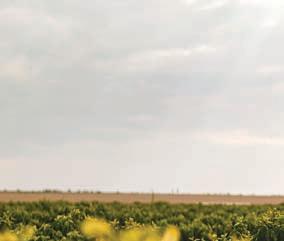








Specialised Concrete Products is a leading provider of precast and custom concrete solutions, serving the top of the South Island regions, including Nelson, Richmond, Motueka, Golden Bay, West Coast, Blenheim, and Kaikoura. Their expertise lies in creating high-quality cement-based preparation compounds and cavity-based monolithic building envelope solutions.
As a New Zealand-based product development and manufacturing company, they understand the demands of tomorrow’s buildings and the diverse weather conditions they face. Whether it’s residential, commercial, or infrastructure projects, Specialised Concrete Products delivers reliable and innovative concrete solutions.
7 Beatty St, Tahunanui, Nelson 021 369 835
Lift N Shift Ltd is a locally owned and operated mobile crane, crane truck, and transportation company based in Nelson.
They specialise in picking up and moving almost anything to anywhere in the top of the South region and beyond.
Their services include shifting containers, house frames, vehicle recovery, boats, trees/logs, landscaping rocks, machinery relocation, steel products and concrete slaps, etc. A new addition to the fleet is a house moving trailer and jacks.
With prompt and professional service, Lift N Shift is there when you need them!



Rachel Fraser grew up on her family’s dairy farm in Appleby which developed her passion for the rural sector. From a young age, Rachel was good at maths and loved animals but didn’t like early starts, so when it came to choosing a career, working in accounting and specialising in Agri Business was the perfect solution.
Pursuing this career Rachel moved to Christchurch attending University of Canterbury, then worked in the chartered accounting environment gaining a broad range of knowledge across a variety of industries.
After 14 years in Christchurch, she returned to her roots in the Nelson region and is now an associate partner at Findex. Combining her own expertise with being part of the Findex family, Rachel can meet clients’ needs by drawing on specialists across a range of areas including tax, lending, investment, risk and personal insurance.
One of Rachel’s favourite aspects of her work is helping people. She goes above and beyond to ensure clients have a better understanding of the financial side of their business, empowering them to make informed business decisions.
Outside of work Rachel is the treasurer of Nelson Federated Farmers and involved in Waimea Rural Connections, a charitable organisation focused on the wellbeing of people in the rural community. Rachel is a mum of two active primary schoolers, with weekends consumed managing their sports teams and on-call backup farm worker for her parents.
As a local member of your community, Findex helps ensure your agribusiness gets the service and advice it needs to thrive. Contact our team today on 03 548 2139 or visit Rachel and the team at 20 Oxford Street, Richmond.
trucks, pipes & pools

03

Need some advice? Introducing your Upper South Island FarmWise Consultant - We’ve got your back.


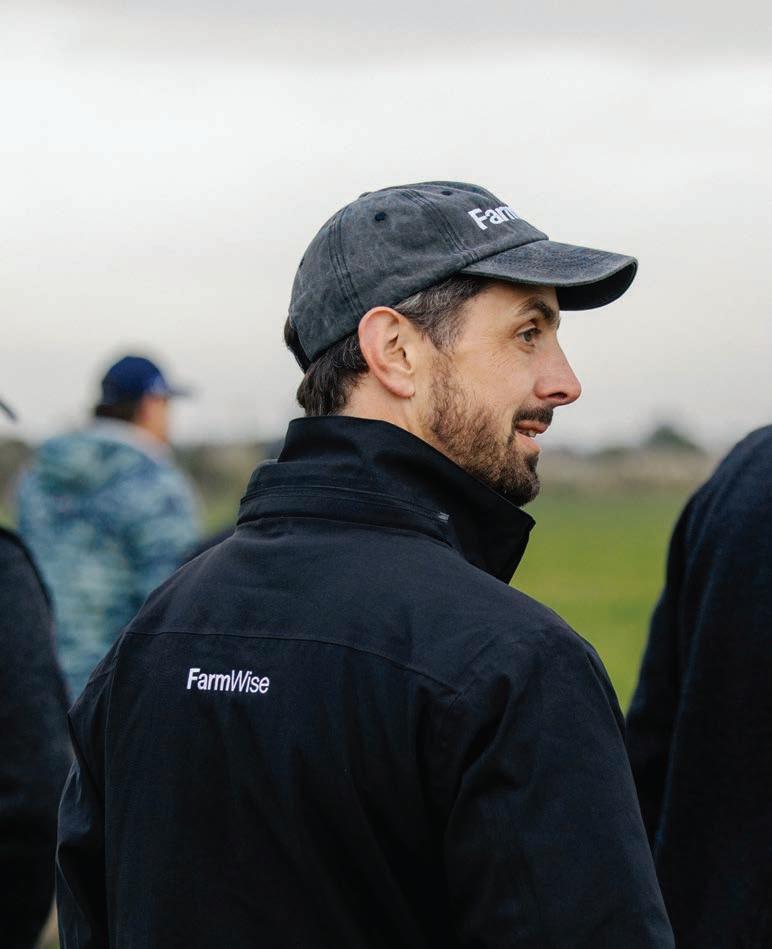
“My role is to coach my clients to be the best team or the best players that they can possibly be. It’s a very enjoyable process, and we have a heck of a lot of fun every day. It’s all about enthusiasm, energy, commitment and drive. And that’s what FarmWise brings to the kitchen table every day.”.
Brent Boyce Upper South Island
Behind every FarmWise consultant is a team across NZ, sharing their knowledge to help you improve and achieve your goals faster.
So, while you may be shaking hands with your local consultant, you’re actually connecting with a team that totally has your back.
FarmWise® consultants provide farmers with independent, confidential advice to help you achieve your business objectives. A FarmWise consultant can provide you with individually-tailored professional, practical and sciencebased advice on all aspects of farming, including: Planning, Budgeting, Pasture Management, Farm Optimisation, Staffing, Audits, Variable Milkings, Governance and Regulations.
Because we’re part of LIC we get unrivalled access to the latest technological and breeding developments. Being connected to a network of nationwide consultants means you can leverage off all our expertise and have confidence in our capabilities.
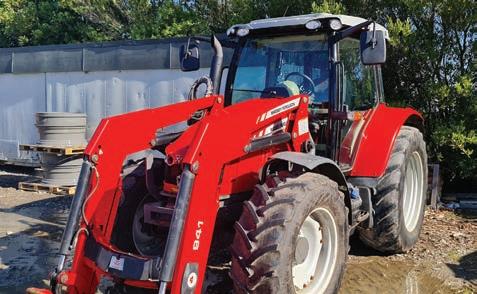



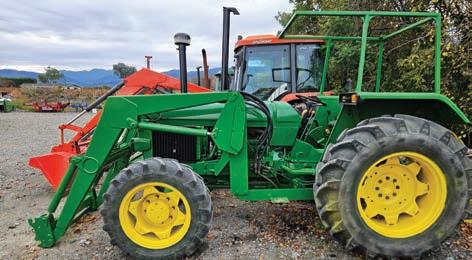
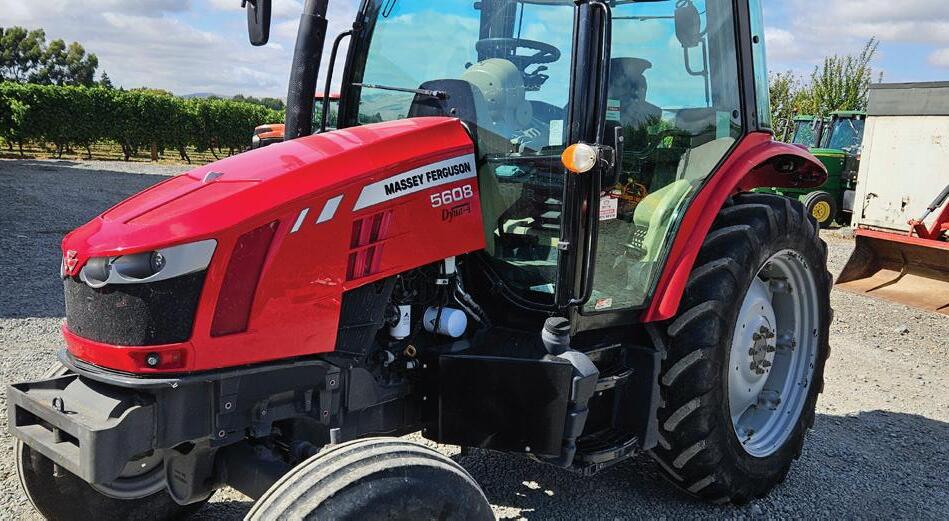



• Iseki 6500 and loader - $12,500
• Massey Ferguson 245 power steering good rubber. Tidy order. New seat and serviced - $10,500
• Massey Ferguson 135 diesel and front end loader needs work on it - $3,500
• IH 414 in good going order power steer and front end loader - $5,000
• Giltrap 3 ton tip trailer - $6,000
• Aicheson 3 tyne sub soiler$4,200
• Small 1.5 slasher - $1,600
• Heavy duty 7ft back blade hy rams to angle and tilt - $6,500
• Austin 3m HD cambridge roller
excellent condition - $4,950
• 9ft cambridge roller, very good order - $2,800
• Vineyard Sweepers - 3 available
• Hustler front fork lift suit 135 MF$2,000
• Trimax 1.8 Vineyard Mower, tidy order - $3,000
• Dual wheels Snap/locks 38” 36” 34” 30” from - $2,200
• Fieldmaster 275 topping mower, all serviced, good condition$4,950
• Silvan 600l herbicide sprayer electric controls - $5,000
• Kvernland TLA 6 metre cultivator
crumbler - $8,500
• Mole plough good order - $1,250
• Rata pallet fork euro hitch - $1,250
• Yeoman chisle plough 9 tyne$2,200
• 2m cultivator - 2 to choose from
• Used cambridge roller rings
• Berti 1.6 mulcher very good order - $6,750
• Berti 1.6 picker mulcher - $5,500
• Ero Roller plucker on power pack all serviced good order - $12,000
• Howard AR 70” rotary hoe - $3,500
• 3 metre leveling bar 3pl - $2,200
• Vicon 302 spreader like new$2,400
• Brevigleri 1 8 mulcher runs up well - $3,500
• 2m Rapier gear drive mower all serviced and ready to go - $6,500
• Fieldmaster gear mower, 1.8 mtrs wide - $6,750
• New 175 slasher, Vineyard mower - $6,000
• Nuibo extendable vineyard mower 1.2mtrs-1.75mtrs - $8,750
• 2000l trailing overow herbicde sprayer hy fold, fully serviced complete with autorate controller - $6,500

SARA HOLLYMAN
The Rai Valley Hunt has been deemed a success with nearly 250 animals weighed in across children’s, youth, and adults’ categories Jamie Knight, who owns the Millers Rest with his wife Kelsey, says it’s the third hunt they’ve run since taking over the business in 2022. He says the 244 entries weighed in a total of 244 goats, deer, pigs, possums, rabbits, and hares. The weather also played ball with a fine weekend across the board. Ja-
mie says they were happy with the number of entrants, half of which came in in the few days before entries closed.
“There were at least two other hunts on that weekend that I know of, so it was a pretty good turnout. We had people from everywhere really including people who came from Nelson.”
The heaviest boar of the day, which was weighed in by Ivy Boyce in the youth category, came in at 72kg or 158lb, beating out Jeremy Everson’s 63.45kg or 139lber.
Ivy’s animal also claimed the
biggest tusks of the day, which is normally awarded in the adults category, but Jamie says after a team discussion, it was only fair to award it to Ivy for her catch.
The heaviest stag weighed in at a whopping 148.6kgs by hunter
Aimee Bates in the adults category. Aimee’s son Beauden Bates claimed the heaviest stag in the youth category with a 102kg animal, a successful weekend all around for the Bates duo.
“We had a pretty good turnout with stags this year,” Jamie says. “And a few more pigs that were in
better condition than last year.”
Jamie says the winning animals contributed to a total of 5.5 tonnes of meat being weighed in at the competition. This year, for the first time, hunters were able to donate their meat to be taken offsite, packaged, and gifted to those in need.
“It’s a first for us doing that and was well received. There’s plenty of people that like hunting for fun so it was good to know other families who either can’t hunt or are having a tough time will benefit.
Marlborough have had an issue
with pigs and goats, so this enabled them to form connections to get a better supply for families in need for the rest of the year, which is great.”
Jamie says he is now looking forward to entering the upcoming Havelock Hunt, without the worry of organising prizes and catering for 250 people.
“Marlborough have had an issue with pigs and goats, so this enabled them to form connections to get a better supply for families in need for the rest of the year, which is great.”


Ewings Poultry
Farmlands Motueka
Harcourts Richmond
PGG Wrightson
Murchison
MS Ford
Murchison Vet Clinic
R & J Batteries
St Arnaud Store
Stihl Shop Richmond
TSM, 563 Main Rd Stoke
Tractor Repairs & Spares
Richmond
Town & Country Vets
Tasman Honda
Farmlands Hokitika
Farmlands
Tasman AG Ikamatua
Farmlands Westport
Farmlands Blenheim
Seddon Supermarket
Renwick FreshChoice
Tractor Repairs & Spares
Renwick
Farmlands Kaikoura
Mariners Mall Picton
Karamea Visitor’s Centre
PGG Greymouth
Buller Vets
PGG Kaikoura
Rai Valley Brick Oven
4 Square Havelock
TSM Marlborough, 52 Scott St, Blenheim Vet Marlborough

KEN STRUGNELL
I was due to drive the Ford Mach E Mustang, [E meaning all electric] this month which due to the ferry situation failed to make it in time. It got me thinking though about the political will, the push to get us into some kind of electric or partly electric cars. Why? The most asked question I get is, ‘should I be buying an Electric or Hybrid car or ute now?’
The answer being political is both yes and no! Without that influence it’s... well complicated! The wave of first adopters benefited from the up to a shade over $8000 subsidy on vehicles like the Tesla 3 and we saw in excess of a third of all new registrations meeting the then Government wishes. With the subsidy and first adopters gone, the market has returned to normal with the vast majority of new vehicles being Internal Combustion Engine [ICE].

There are three types of what are commonly called Electric Vehicles. BEV or Battery Electric Vehicles purely run-on plugged-in electrons. These incur the same rate RUCs as diesels. PHEV or Plug-In Hybrid Electric Vehicle using both Petrol and Battery power, also use a plug to recharge
them. Technically they can run for around 50-80km on a full charge without burning fossil fuels. This is why they incur half-price RUC’s. However, the reality is that they will travel much of their lifetime for rural users on petrol alone. Then there are pure Hybrids that

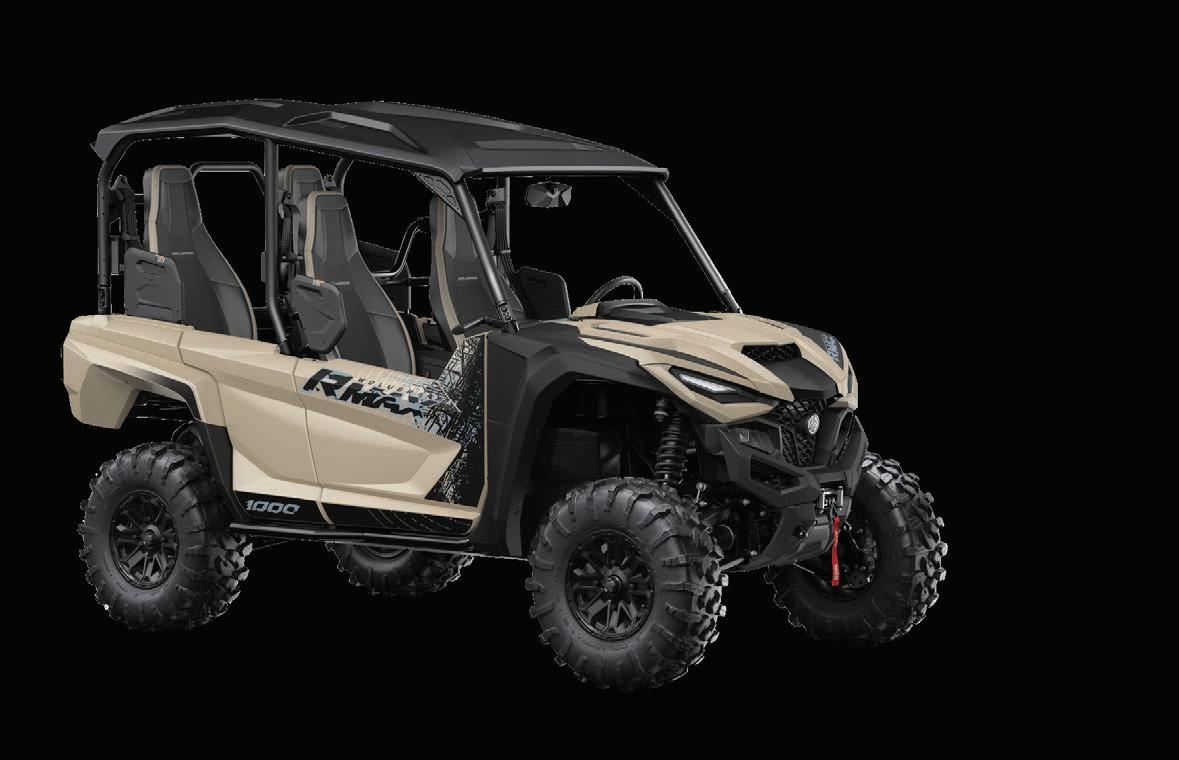
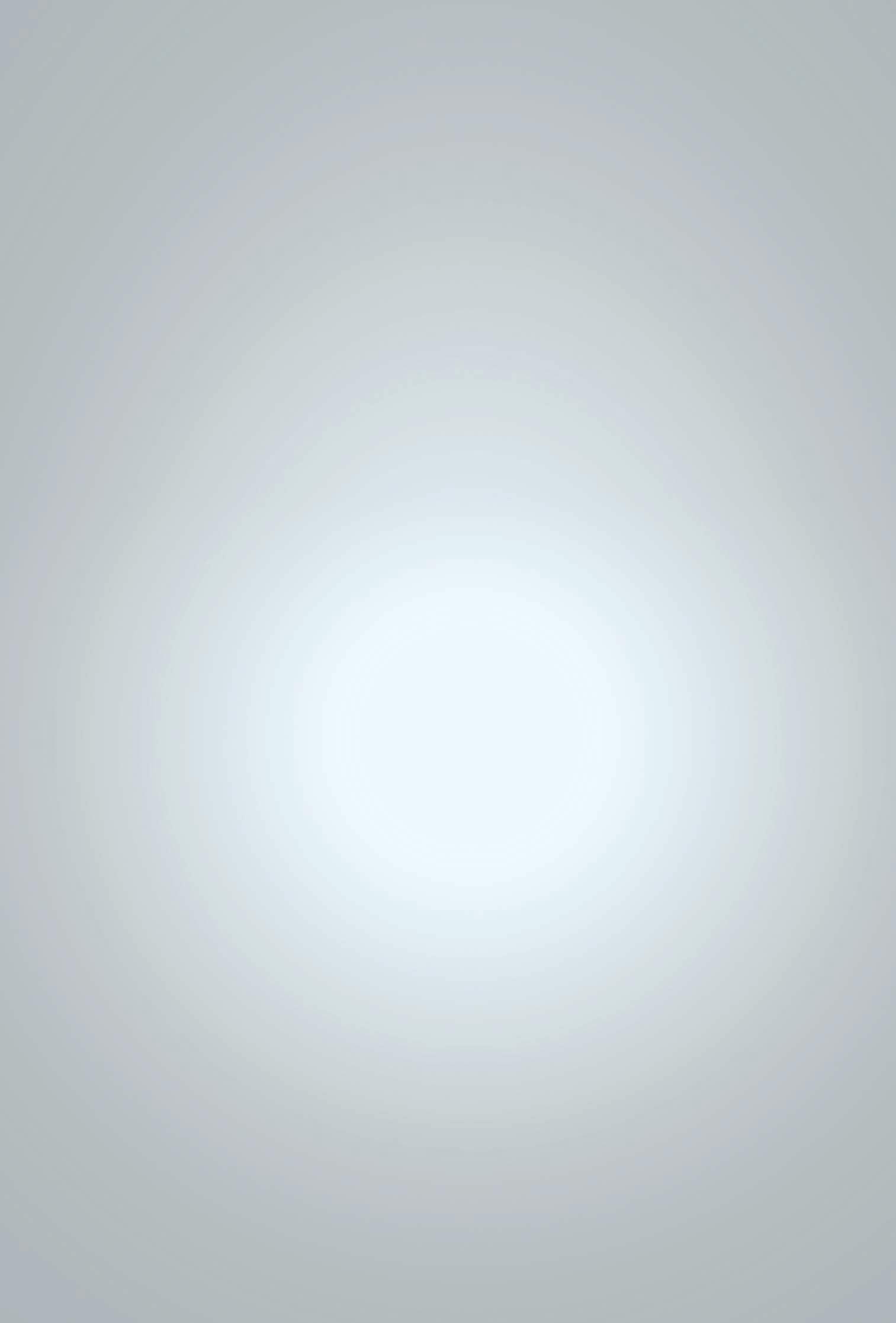

incidentally makeup over 70 per cent of the ‘EV’ fleet. [Largely thanks to Toyota and Subaru who with one exception, only sell hybrid EV’s] These use the petrol engine most often with braking and deceleration, such as downhill, to charge the battery. Most can start and move happily on low

throttle levels using battery alone. Once more power [acceleration] is needed the petrol motor kicks in. There is a small sub-group of Hybrids that start with the petrol engine then revert to battery power when slowing or lightly driving, even on the open highway. These have smaller batteries that use less room and, importantly, weigh less. Examples include all Suzuki’s and Subaru Hybrids.
Most EV’s of whatever type, don’t have a full-sized spare and often none at all. Usually, the space consumed by the battery is where the spare normally resides. This alone makes EV’s less suitable for rural road conditions. Allied to this some EV’s use lighter construction or speciality tyres that are potentially more susceptible to puncturing. To get around the lack of spare and the possibility of a flat they are provided with aerosol tyre repair and small tyre compressors to re-inflate tyres.





Though there are some exciting new Utes being launched such as the BYD Shark [think Atto, company]. It runs a 1.5 litre petrol mainly generator engine and electric motors for both axels, along with the 29kwh centrally placed battery below the floor. This ute is considerably bigger than the Ranger as is the new, yet to be released Kia Tasman. Those of you with memories dating back to the 70’s may recall the unloved and frankly awful British Leyland Tasman brought out to compete with the ‘big three’ Aussies, Falcon Valiant Kingswood. It was soon replaced by the equally short lived, though much better P76. So, the Tasman moniker is a strange choice.
More utes are to come, with Toyota releasing the mild Hybrid 48volt petrol only Hilux and Ford about to drop a PHEV Ranger onto the market. Mahindra too have a good looking one, as have LDV with the updated T60, now marketed in NZ by Inchscape who also sell the Subaru range.
Overseas Subaru have a smaller ute called the Brat and an Outback sized Brumby offering, though no word yet on a NZ release... While few utes are yet available there is an absolute plethora of SUV’s available in all EV forms from most manufacturers. The current Clean Car Standards are being reviewed by the Government and despite the lack of honesty from the
Greens, there are no taxpayer “Billions of Dollars penalties” for not meeting the 2030 Paris Accord on Climate. This leaves the car market in NZ allowing consumers to make their own minds up on EV’s. I like the way EV’s perform. In most cases and they are claimed to be better for both your wallet and the environment. Don’t buy them for either reason as they are demonstrably false.
However, if you must have one, the best option at present is the Hybrid. For pure EV’s, battery technology has to improve and go on a serious weigh loss regime.
When and if RUCs are applied to all vehicles PHEVs might be the preferred motive tipple!


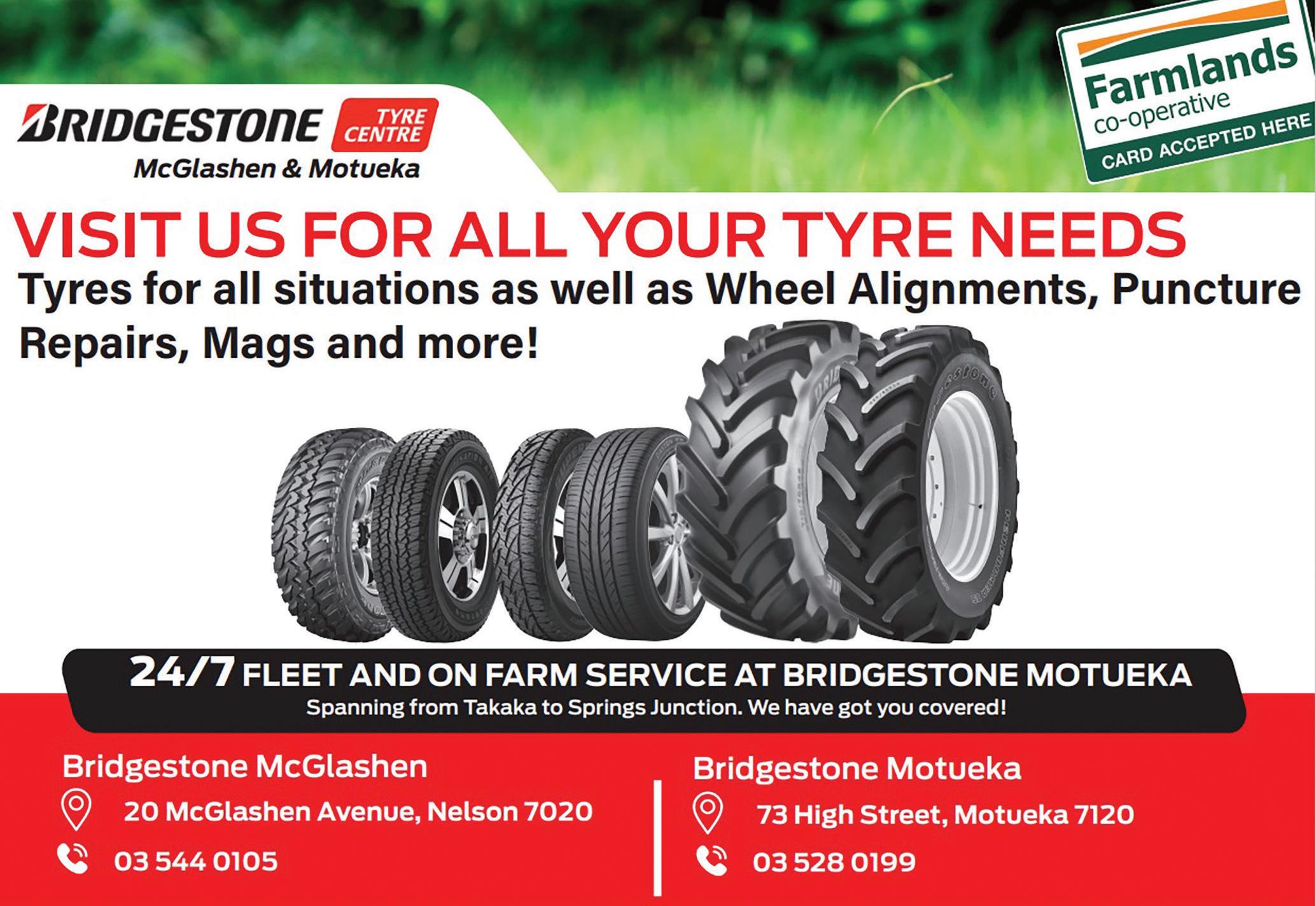



JOHN BARNES Managing Director Fertilizer New Zealand
Soils are a complex eco-system and react to the type and amount of feed/fertiliser they get. Feed them correctly and a balanced diet and they will produce abundantly.
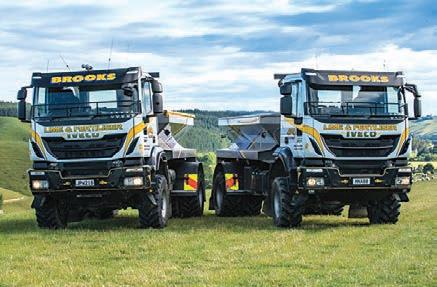

Soils should be alive, not just an inert substance. For soil to be alive, they must have the ability to hold that life, and this part of the soil is carbon. The carbon should be about 4% of the total soil. The other compositions are parent material such as clay, silt, sand and various loams; around 45%. The rest is air and water and should make up 25% each. Most of the life in the soil is contained or derived from the 4% of carbon in the soil. When fertiliser is applied, it will change from what it is into some other form. For example, if there is iron or aluminium in the soil and the phosphate product has a low pH, then there is a good chance this phosphate will become iron phosphate or aluminium phosphate within a few months. Then it becomes unavailable to the plant that is growing in the soil. But if the phosphate fertiliser that is being applied contains carbon, the phosphate will become bonded to the carbon which will

then be less attracted to the iron and aluminum and will still be available to the plant for the long term. Some say that the phosphate delivered in this way increases its effectiveness by 30%. Add to this a balanced soil biology and this will increase the effect even more, giving even greater results. This is a plus, plus effect. This would mean the phosphate applied in this way will be available for longer and give better results and stronger plants. Phosphate should not run out during the season, assuming that sufficient was applied at the beginning of the season. So, what does this phosphate look like?
Sufficient phosphate to do the production required. Sufficient

carbon within the mix to hold the phosphate in a form that doesn’t get affected by iron or aluminium or any other less effective elements.
Sufficient microbes and fungi in the carbon to release the phosphate from the soil and get it to the root system of the plant to become effective. In other words, this becomes an active phosphate, not a passive phosphate which is what most of the other products are.
Other phosphate systems rely on the roots somehow
becoming connected to the phosphate somewhere near the root system. It is a bit hit and miss and requires more phosphate being applied so that some will work.
Fertilizer New Zealand has developed a product that combines phosphate, carbon, microbes and fungi, we can add this to any fertilizer mix. This improves fertiliser efficiency and availability to the plant. For more information, please contact 0800 337 869 or visit www.fertnz. co.nz
After tests in April indicated that Australian fertiliser company Marnco’s Superphosphate fertiliser was lower in phosphate content than it represented to market, we stepped in to ensure New Zealand farmers and growers were not receiving misleading information.
“We were concerned for New Zealand farmers that the product they were receiving was not the product they thought they were buying, and that this would affect the productivity of their farm and have a negative financial impact on them. For this reason, we sought to engage with Marnco, and when that failed, we decided we would undertake legal action against Marnco for misrepresenting their fertiliser as superphosphate,” Chief Execu-
tive Dr Vera Power said.
Legal action has now been dropped as Marnco has agreed it will no longer market its fertiliser as superphosphate.
“Our action was about the product, not the company. We were never in opposition to Marnco selling or promoting its product in New Zealand. Our concerns related to any representations made about the fertiliser, especially when these are not consistent with the Fertmark Code.”
Buyer beware is an important consideration when purchasing fertiliser. That’s why we recommend that farmers and growers look to see if product sold has the Fertmark tick –that means that the product has been independently assured – so farmers know they are getting what they pay for. If products don’t have a Fertmark Tick – get them independently tested.

ELOISE MARTYN
The government has confirmed the repeal of the legislation requiring compulsory registration of log traders and forestry advisers which was brought in and enforced by the Government in August 2020.
Aimed at enhancing accountability, the legislation has been both praised for promoting fair practices and criticized for its bureaucratic burden. Minister of Forestry, Hon Todd McClay defended the repeal, which was announced on 26 June, as a step towards reducing regulatory constraints and supporting economic growth.
Changes came into effect on 1 July and any fees or levies already paid to the Ministry for Primary Industries this season will be refunded; however, this doesn’t cover the costs that many in the industry have
spent completing the necessary requirements and training.
Some forest owners have welcomed the repeal saying it will provide relief to cost-struck growers facing increased regulatory complexities. In contrast, other forest owners have raised concerns about oversight and industry quality control.
Without mandatory registration, there might be less assurance of professionalism, competence, or adherence to ethical standards among forestry advisers. Further concerns have been raised by environmental groups and industry experts, who fear it could weaken safeguards against exploitation and compromise sustainability efforts.
Timber products play a pivotal role in our primary exports, timber products contributed $5.8 billion to our economy last year.




MARCUS MUSSON
Director Forest360
Survive to ‘25 seems to be the new catchphrase around the country, especially in the primary sector. It probably wouldn’t have made a great political campaign slogan, but it does sum up the general feeling around the traps. July hasn’t delivered any surprises in terms of export prices with another minor lift of around $5/JAS across the board. This brings the A grade price at Southern North Island ports to around $117/Jas, a few more dollars for Napier and Marsden, and those unfortunate folks that supply Lyttleton are not quite in triple figures yet with $99/JAS.
There’s nothing new in the news from China. The property market is still as bigger a problem to the CCP as Darleen Tana is to the Greens. New house prices fell
for the 13th consecutive month which has dragged the country’s economic growth down from a growth projection of 5.1% to 4.7%.
It’s becoming more obvious that China’s fibre demand is shifting to furniture and packaging as traditional construction markets disappear. Southern China has previously consumed NZ supply at around 3.5Mm3 per annum, however, this has dropped to well under 1Mm3 as the region switches to more manufacturing and usage of the region’s short rotation Eucalypt species. The changing utilization of our product is resulting in tightening of log specifications and less demand for the lower grades of KI and KIS.
NZ supply into China has dropped significantly in the past month, however this is only having a minimal effect on port in-
ventories as uplift has tanked to around 55,000m3 per day from 65K in June due to flooding in South China compounding what is a usual off-season. Current inventory is sitting at around 3.2Mm3 which hasn’t dropped as quickly as expected giving sellers less leverage for price increases. Shipping rates continue to be stubbornly high and there’s not much sign of easing with the continued ruckus in the Suez Canal. Even though supply has dropped, it is still higher than what would usually be expected with current price and cost levels. Over the past 18 months, longer-term fixed price contracts between exporters and forest owners have been gaining momentum and support.
This has enabled many of us to keep producing, albeit at reduced levels, with prices that are $1015/JAS ahead of current spot prices. The advantage of this is that exporters have a more predictable supply and forest owners have a known price and hence return, however, the disadvantage
is that it supports a supply base which is artificial and doesn’t react to the traditional supply/ demand model. This is likely one contributor to the stubborn spot price increases. India has had an influx of volume from Australia and South America which have both freight and fumigation advantages over NZ. There has been a notable increase in phone calls and emails from all sorts of Indian buyers but it’s unlikely to result in any significant increase in supply.
To add insult to injury, Napier port has added an additional charge to all trucks of $15 per load which is further squeezing forest returns. This charge is purely a money grab to increase shareholder return on investment and does not reflect any additional service delivery, even though it was initially couched as a cost of administering the new and contentious truck booking system. Industry has rightly pushed back on the charge, but protests have not been fruitful, and the port has barreled ahead
with the implementation. Nothing to see here with carbon. The current NZU price is sitting at $54 which has very slowly inched its way up from sub $50 in May.
NZ’s residential construction costs have decreased for the first time in 12 years with a 1.1% decrease in the quarter to June. This may help alleviate the slide in new dwelling consents which, according to CoreLogic, are down around 30%. Domestic sawmill demand is still buoyant in the face of lower construction levels, and it is important to note that pruned log mills are much less affected by the NZ construction sector than their sawlog sawing cousins.
In summary, the market is still as unpredictable as a Biden speech, however, until the inventory in China dips below 3Mm3 or the Houthi’s put their missiles away, we’re unlikely to see any significant increases in export prices. Survive to ’26 doesn’t have the same ring to it, so let’s hope the current catch phrase proves true.
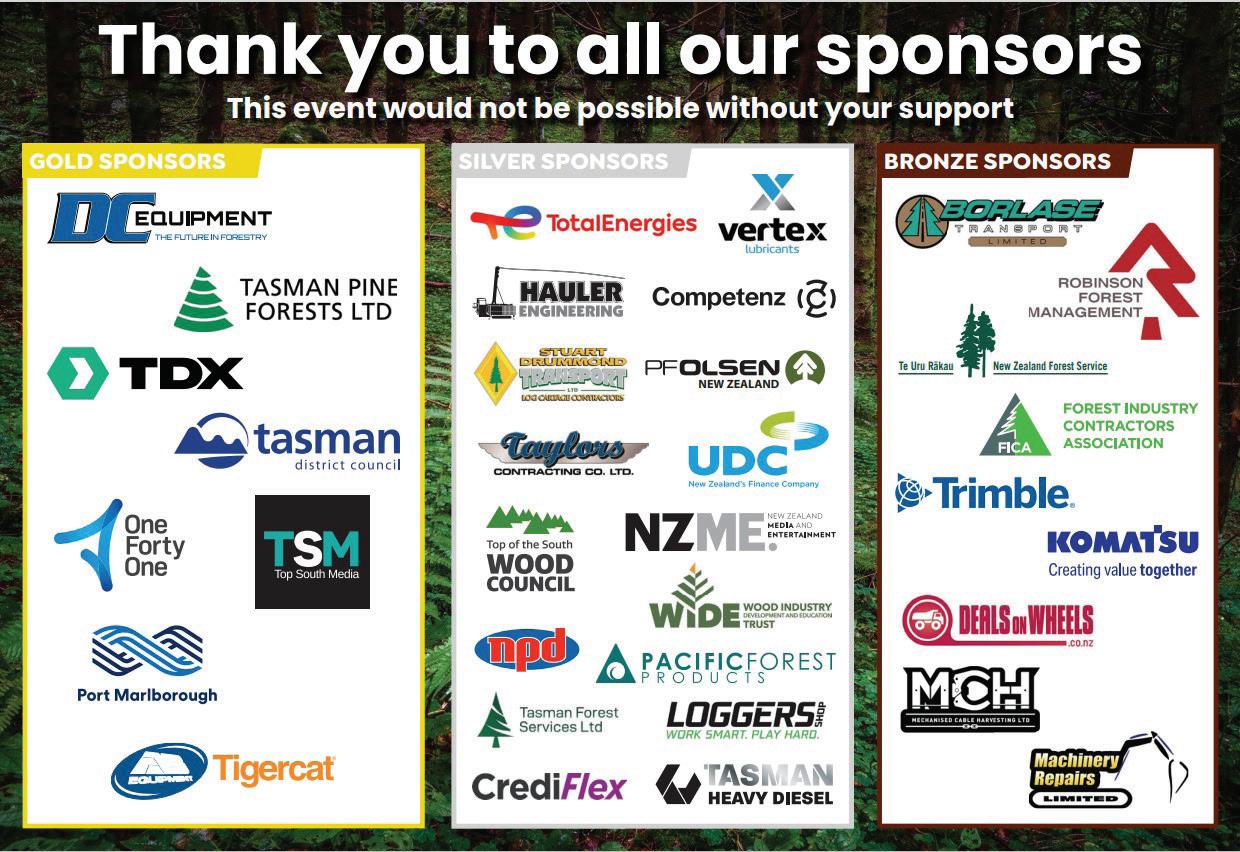

Te Uru Rākau – New Zealand Forest Service
The Wood Processing Growth Fund (WPGF)
second capital investment round of the Accelerator programme is now open, and applications must be received by 26 August 2024. Accelerator provides loans or equity finance to co-fund capital investment in new capacity and improvements that increase onshore wood processing capacity, productivity and improve competitiveness. This second investment round continues to focus on projects that are investment ready. Investors who are advanced in planning a new wood processing development, or an expansion or upgrade to existing sawmills, engineered wood, panels, or roundwood pro-
duction should consider applying.
The WPGF also provides grants for pre-investment activities such as business cases, feasibility studies and technical assistance through the WPGF Catalyst programme.
Some details on those two funding streams are as follows:
• Accelerator – up to NZ$33M in debt or equity investment in capital projects aimed at expanding wood processing.
• Catalyst fund – provides up to NZ$2 million per year in conditional grants to support feasibility studies and related pre-capital activities for wood processing projects.
The WPGF is managed by Te Uru Rākau - New Zealand Forest Service in collabora-
tion with Kānoa – Regional Economic Development & Investment Unit.
Outside of the WPGF, Te Uru Rākau – New Zealand Forest Service can help connect you with funding and support programmes across government. These include the Sustainable Food and Fibre Futures Fund, NZTE, EECA, MBIE Kānoa, Callaghan Innovation, Green Investment Finance, Waste Minimisation Fund, Scion, Export Credit Office etc.
More information at www. mpi.govt.nz and type Wood Processing Growth Fund in the search bar.
If you have any questions or would like to discuss making an application, please either email or call MPI on: Email wpgf@mpi.govt.nz or NZ freephone call centre 0800 00 83 33.

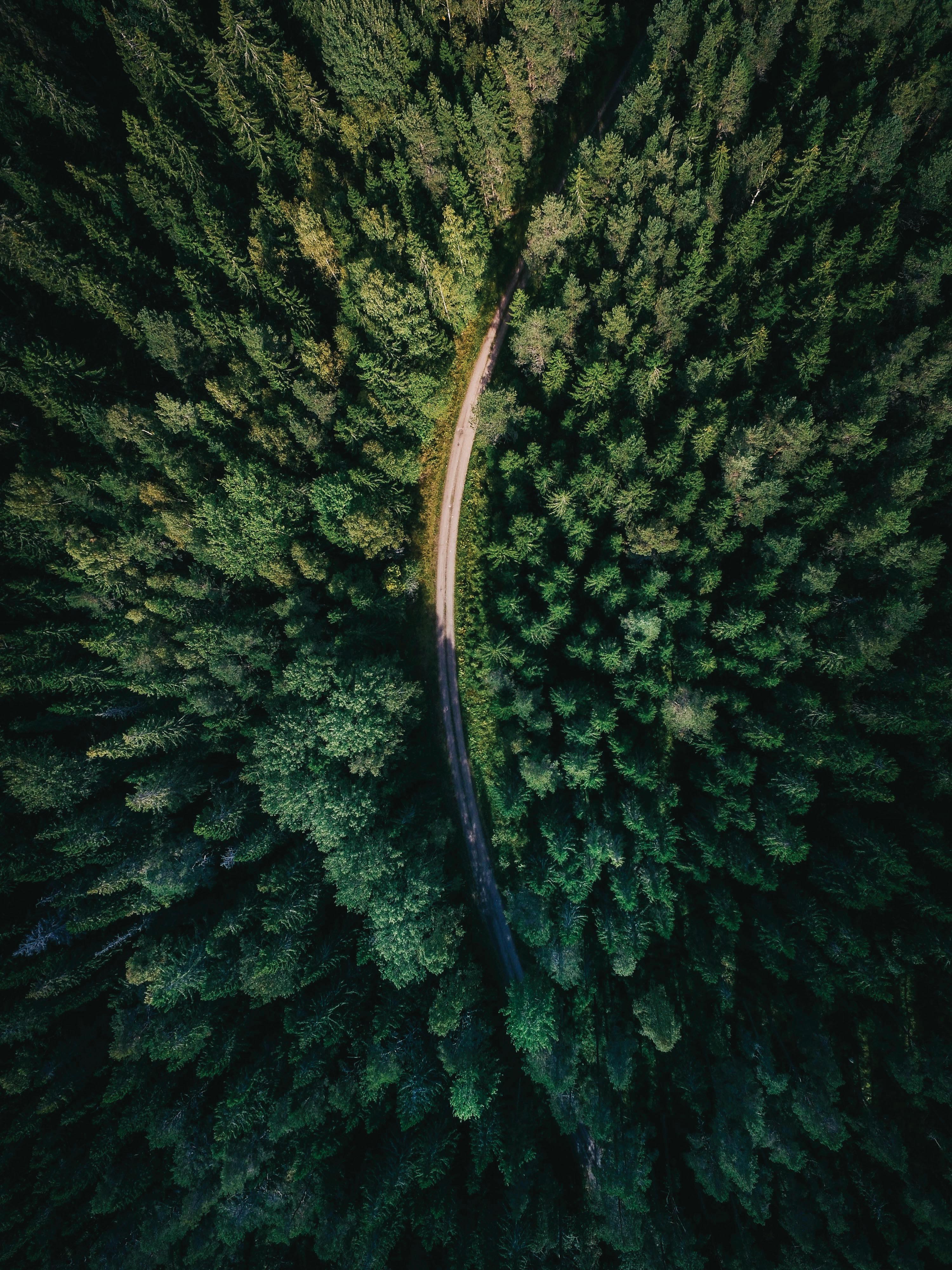
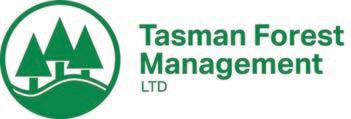
With 25 years experience in the industry the Tasman Forest Management (TFM) team offer services in:
• Forest and woodlot harvesting
• Domestic and Export Log Purchase
• Forest Establishment
• Emissions Trading Scheme advise and management
• Forest Valuation
• TFM are part of the Forest Management Group with offices throughout the South Island, Hawkes Bay and Southern North Island


ELOISE MARTYN
‘Possums should be reimagined as ‘valuable assets’ and as they can provide decent clothing and food, they don’t need to be regarded as a farming expense’. That’s the message that Clarence Valley farmer Heather Gilbert is advocating.
“Possum fibre is said to be the world’s third warmest fibre, it is hollow so does not freeze,” Heather explains. “There are only two other species with hollow fibre: polar bear and wolverine. Merino is lightweight, very soft next to the skin, wicks water away from the skin, is antibacterial, deodorising and self-cleaning so needs little washing. It also regulates body temperature,” she says.
“Early explorers found wearing wool kept them warm, but at night the sweat froze. This doesn’t happen with Merino. And possum is lighter and more insulating than merino, and its fire retardant.”
Heather runs 900 naturally coloured Saxon merino, on their 324ha farm, primarily for the fibre, not the meat. She says that, unlike regular merino, Saxon merino is lighter and warmer than cashmere and when combined with possum it’s ‘probably the lightest and warmest fabric in the world.’
“Keeping warm is essential, with current climate extremes and power cuts this lightweight super-soft fabric could be viewed as a mobile power pack and we want to support self-sufficient lifestyles,” Heather says.
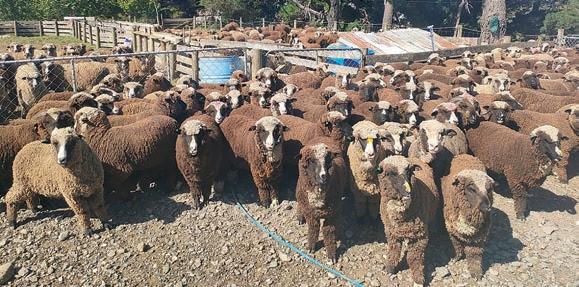
“Our wool and fibre felts quickly, and our resident fibre artist, Rangi, can make an amazing blanket in a day with instant warmth in winter which also helps keep cool in summer. Self-sufficiency enthusiasts could do this at home, keeping their family safely warm in an affordable way,” says Heather.
Producing accessible affordable possum fibre could be done in several ways according to Heather, who says “If we treated our pests as assets the possums-area-pest problem would disappear, and there would be fewer possums if the fibre was more highly-valued.” Qiviut (the inner wool of the muskox.) sells for $650CAN/kg and I am told the world supply of vicuña (silky wool from South American Lamas) sold out at @$2000/kg. Possum is warmer and lighter than both, but to retain a market would require a good supply of product.”
Heather says precious public land should be regarded as an asset to benefit the physical, mental and economic welfare of its ad-
jacent inhabitants’ and that ‘Possum, deer, pigs and goats have economic value’.
She says that similar meat, fibre and hides are highly-valued elsewhere. Heather can explain countless ways that as a country we could make these pests a real asset while also clothing and feeding the nation to a high standard.
Creativity is as essential to human welfare and to help inspire creativity, Heather and her team have been hosting mini felting events for locals (felting is the process of bonding fibres together and compressing them into a dense flat fabric) as well as engaging with the local school on easy, but practical, DIY projects kids can make.
Heather is not advocating farming in the wild. Instead, she says there are many items’ people can make safely and cheaply to keep them warm., She says there are lots of benefits to blending fibres, such as increasing softness and feel and she is passionate about showing people how easily this can be done.

Suppliers of all grades of industrial and household coal
• West Coast sub-bituminous coal with low ash, low sulphur and clean burning qualities
• High grade West Coast bituminous low ash coal
• Premium grades available for your boiler or multi fuel burner
• Bagged coal from 20kg to 1 tonne
• Bulk deliveries
• Coal storage in the Canterbury region for continuity of supply
Give Mark a call on 027 531 0998 for a competitive price to have your coal delivered direct from our mines to your place.
Phone 0800 110 602 Email mark@birchfieldcoal.co.nz www.birchfieldcoal.co.nz

Ngāi Tahu Holdings is pleased to announce it has agreed to sell a 35-year cutting right of its West Coast Plantations to a new joint venture comprising Fiera Comox (85 percent) and Ngai Tahu (15 percent).
The whenua is not included in the sale, which is only for a single rotation of cutting rights, whereafter the forests return fully to Ngāi Tahu ownership. The investment marks the initial acquisition by Fiera Comox’s Global Sustainable Timberland Strategy, which invests in high-quality, private forests globally. The Timberland Strategy is led by a team of highly experienced professionals who have acquired over two million acres of timberland in transactions representing several billion dollars in value. Both organisations say the move is positive for the region, with Fiera Comox bringing global expertise to a significant industry for Te Tai o Poutini (the West Coast).
Ngāi Tahu Holdings Chief Executive Todd Moyle welcomes the partnership.
“We’re looking forward to building a successful long-term relationship with Fiera Comox, which has an established track record of working with Indigenous groups in both Aotearoa and Canada.”
Antoine Bisson-McLernon, Partner and CEO, Fiera Comox, commented.
“We are delighted to have the opportunity to partner with Ngāi Tahu in one of the most attractive and globally competitive softwood-producing regions in the world. Our team has had significant success investing and creating partnerships in New Zealand, and we look forward to working with our partners at Ngāi Tahu in generating long-term sustainable value for the joint venture, West Coast communities, and Poutini Ngāi Tahu in recognition of their deep connection to the land.”
Each year, approximately 225,000 m3 of softwoods, such as pinus
radiata, are harvested across West Coast plantations. The trees are sold to both domestic and export markets. Todd Moyle says the sale of the cutting right is a pragmatic decision as Ngāi Tahu Holdings continues to adapt to a difficult economic climate whilst also maintaining its commitment to the West Coast.
“Last year we signaled we would be looking to free up additional capital. This is effectively a presale of our trees to give us more certainty and flexibility. Ngāi Tahu Holdings has an intergenerational approach, and we remain committed to Te Tai o Poutini for the long term. Our 15 percent share in the joint venture and a director on the board ensures we retain oversight over the operations.”
Poutini Ngāi Tahu Co-Chairs Francois Tumahai (Ngāti Waewae) and Paul Madgwick (Ngāti Māhaki ki Makaawhio) support the move.
“Ngāi Tahu Forestry owns 45,500 ha of forest blocks across 20 forests between Westport and Franz Josef, so we’re especially pleased this deal protects an ongoing log supply to West Coast sawmills and all kaimahi can choose to retain their roles,” says Francois Tumahai.
Ngāi Tahu access rights to the whenua will also be maintained, with Fiera Comox committed to preserving and safeguarding wāhi tapu sites and places of cultural importance.
“This is the best outcome for both Ngāi Tahu and the West Coast. Our communities can continue to access permits to use the forest, as they do currently,” says Paul Madgwick. The joint venture will be retaining the existing office in Greymouth.
“We look forward to a strong partnership ahead, including exploring new opportunities to work together,” says Francois Tumahai.
The deal is subject to approval from the Overseas Investment Office, which will likely take a few months to complete.

Marlborough Federated Farmers
Tony Orman
India has been identified as a trading partner with good potential for primary produce said Federated Farmers meat and wool chair Cath Baker to the recent monthly meeting. Her comments were made after attending the recent Primary Industries New Zealand conference.
“India has been identified as a potential new tariff-free trade partner in recent negotiations, although this is expected to be a long process. Middle income earners in India are exponentially growing,” she said.
India is known to be the 5th largest economy in the world, surpassing the UK this year and expected to move to the 3rd largest in the world by 2027. It is known to be the largest democracy in the world.
The PINZ conference was addressed by Todd McClay, Minister of Agriculture, and Prime Minister Christopher Luxon.
“It was heartening to hear their sentiment of NZ farmers, that we are valued and are not villains, as it seemed under the previous government,” said Cath Baker. “Both Luxon and McClay mentioned that they would like to see NZ exports double in value within the next ten years. A lofty target that no doubt will predominately be made up of agricultural products.”
Dairy Section chairman Hamish Morrison who also attended the PINZ conference said he was very impressed with the quality of speakers. “In addition, some very well-deserved award winners were showcased at the dinner event including the late Dr Warren Parker from Pamu
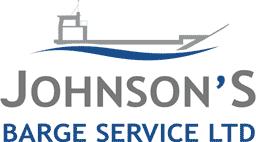
Farms and local Nelsonian Julian Raine, who won the Outstanding Contribution award,” he added.
Local Scene
Reporting on the Marlborough scene Cath Baker said scanning rates are back on last year, but not drastically so. It may mean that farmers have slightly less lambs on the ground to finish but that should allow farmers an opportunity to hold onto them slightly longer to achieve heavier carcass weights.
Dairy Section chairman Hamish Morrison said while rainfall was significantly down for this dairying season, in any year there was always a strong element of uncertainty. For the year ending 31st May, Rai Valley had 1400mm for 2023/24, compared to the other extreme of 3900mm for the 2022/23 year, with the usual average of 1800-2000mm. “It really shows how unpredictable the weather can make farming, but that is the challenge we must face and adapt to,” he said. President Evan White in his report said the main topic had been the ongoing impacts of the drought. “While we have had some rain, we really need more to recharge the aquifers.
In saying that the recent rains and growth have been welcome. The dry conditions did mean any pasture crop fed and supplements fed-out were well utilised,” he said. “Some farmers have had little option but to buy in extra supplement with no winter grazing around.” Marlborough Federated Farmers have joined forces with Wine Marlborough and submitted and spoke to “The Future of Marlborough Hinges on Water Storage”.
Marlborough farmers have been encouraged to set up “Curious Cockie” clubs.
Rural adult educator, John King, of Christchurch visited Marlborough recently encouraging local farmers to set up a “Curious Cockie Club” where farmers are encouraged to get together, seek to learn, ask questions and find better ways to farm.
King said the Curious Cockie Club concept plugs a gap beyond workshops and field days.
“Small groups encourage everyone to be in the conversation. Unlike large groups there is no ‘mob behaviour’ driven by those with the loudest voices” he says. “Everybody gets heard and I enjoy the many observations and insights farmers share during farm visits.”
Hosts are requested to show what they do really well and what their greatest on-farm challenge is. Many hosts find the experience refreshing and fun and some go on to joining local groups.
“The concept is to encourage dialogue between thinking curious farmers and there’s already groups from Northland to Southland. Usually beef and sheep guys are the backbone of the groups.
“If farmers can be helped to find natural processes that reduce chemical, fuel and other such inputs then that’ll step them off the inflation cycle. That’s positive for the farming operation and it’s a forward step for environmental-based production.”
King, along with a dozen Marl-

borough farmers, visited Paul and Cath Baker’s “Sevenoaks” sheep, beef and cropping farm at Hawkesbury and then Leefield Station in the Waihopai Valley.
Cath and Paul Baker explained their farm also includes 17ha of sauvignon blanc grapes. Cath explained they enjoyed grape production, with the resulting income helping the farm’s viability. Paul agreed that diversification via grapes had undoubtedly improved the farm’s viability.
In 2020 Paul and Cath Baker sold their Corriedale ewes and purchased Longdown. Paul said “Sevenoaks” wool was now likely to be used on-farm as mulch for native planting projects as cartage costs to Nelson would further undermine strong wool’s marginal returns.
“Sevenoaks” currently runs Longdown ewes, the breed chosen for its characteristics of “high meat yield, fast growing lambs from a maternal sheep.”
“We’ve enjoyed farming Longdowns, and scanning in 2022 was 200 percent and 192 percent in 2023,” explained Cath.
“The number one challenge is fencing, as Longdowns are fence pushers. If we won Lotto our first job would be to immediately finish the fencing upgrade.”
“Seven Oaks” currently runs Murray Grey cows, with oat seed, wheat and red clover seed comprising the cropping side. Paul said ewes were drenched just once a year.
“We’re understocked but that’s deliberate as I like to ensure

healthy, quality animals and ensure flexibility with our cropping business,” he added.
The environment and making full use of resources is to the fore with the couple looking to use grape marc to boost growth.
Grape marc, sometimes called pomace, is the solid waste left over from processing grapes into wine and is extremely high in nutrients and cheap to purchase for stock feed.
An eye to environmental spinoffs through more sustainable practices had seen a noticeable increase in wildlife with harrier hawks on “Sevenoaks” successfully raising several young.
The group then moved to Leefield Station where they were hosted by farm manager Greg Crombie and taken on a tour of the hill country behind the vineyards. When Greg took up farm manager position six years, stock units numbered 3000 - now it’s 5,000.
“The station carefully and judiciously integrates the grape production with the farming side,” he said.
A large-scale stock watering system has resulted in much improved stock performance due to sheep not travelling so far for water and improved cow milking performance.
John King has written a book detailing over 50 case studies of “curious” NZ farmers taking up regenerative farming and daring to ask questions. Enquiries to john@succession.co.nz


Outstanding Province Award
This year our province, Nelson Tasman Federated Farmers, was awarded ‘Outstanding Provincial Sales Growth’ at the Federated Farmers National AGM held in Wellington at the start of July (which is run alongside the 2024 Primary Industries Summit & Awards known as PINZ). This award equates to increased membership and being a member means that you are part of a community that’s been at the heart of farming for nearly 120 years. Federated Farmers still has the largest policy team outside of the government, spread throughout the country, and increased membership means a powerful voice to continue to fight to stop regulations that create extra costs and unfair outcomes for farmers’ businesses. To highlight a few, we have been working on the rural banking inquiry- and we are progressing with why banks should see this as an opportunity, not a threat, the long overdue ‘independent methane review’ which is welcomed news for all and backing the return of live export provided welfare issues are addressed. It’s our job to look into the future and see what’s coming for farming. And then make sure the right people are aware of the impact their decisions will have. No other organisation does this. There are many other advantages to membership; like free legal advice, specifically designed contracts and agreements, communication about what’s going on out there and what it means on farm, mem-
ber deals and discounts, and the opportunity to network with others in your industry at a local level. To all of those who are members, have been members, or support us in other ways thank you!
There is a saying in the Federated Farmers organisation ‘Family, Farm, Feds’ as in the bustling world of farming, amidst the demands of crops and livestock, it’s crucial to remember what’s on top, and that’s family including yourself. While farming requires dedication so do our loved ones and by putting family first, we cultivate more than crops or healthy animals; we nurture bonds that sustain us through challenges.
Balancing family and farming are never easy, both tasks require a great deal of time and care so when it comes to striking a balance you need to nurture yourself first so that both your family and farm can thrive. Keep in mind that you fall into ‘family’ in this lineup, you’re on top. www.farmstrong.co.nz has some great resources on stress and burnout, sleep well, healthy thinking, time out, eat well and farm fit however if that seems too much to digest remember the 2021 campaign ‘lean on a gate chat to a mate’ it really can be that simple; make time to catch up with a mate for a cuppa or drink, the health and mental benefits from connecting with a friend are endless. Family, Farm, Feds can apply to any voluntary organisation you are involved in, to be effective, for longevity, and to make it possible to donate your time.

St Arnaud Rural Women have had a busy first half of 2024 as they engage in meaningful community initiatives, contributing positively to their local area.
“Where to start,” Laughs St Arnaud Rural Women chair, Margaret Anderson.
“Recently we put on a lunch for the Ravensdown shareholders, we also made meals for a convoy of vintage army vehicles which started and finished their tour of the South Island in St Arnaud. They commented how much they appreciated our lovely home cooking.”
The group demonstrated their commitment to honouring veterans and community spirit by hosting a well-attended Anzac Day commemoration. The event, attended by approximately 120 from the community, featured a poignant address by a guest speaker from the New Zealand Airforce, resonating deeply with attendees of all ages.

In response to community health needs, the group initiated a successful pop-up health clinic at Lake Rotoiti Community Hall. This clinic provided essential services including COVID and flu vaccinations, serving 27 locals ensuring accessible healthcare support and recognising the importance of community resilience.
St Arnaud Rural Women kicked off a fundraiser for a community generator.
“We really need a generator as a community for adverse events, mainly to run the hall which is the hub if disaster strikes. But it can also be used in various community places as a backup to weddings or kids’ events if there is a power cut.
St Arnaud Rural Women did some organising and donated $4000 ?? to kick it off and then the fire brigade carried it on, it is such an asset for all,” Margaret explains.
Their compassion extends beyond local events, as they con-
tinue to support initiatives like
‘Casting for Recovery’, providing gift baskets to women facing breast cancer during retreats at the local fishing Lodge. Additionally, their ongoing donations of handmade wheat bags and syringe pouches to Tasman/Nelson Hospices offer comfort and care to those in need.
“Ten ladies from all over the top of the south come to Owen River Lodge for a luxury weekend and learn to fly fish and relax, said Margaret.
“Quite a few of us have had breast cancer and know what these ladies are going through, so we have for the past 10 years annually donated gift baskets, and we are thankful for the donations from Nelson Honey, Bulb Direct, and Bunnings to make these gifts extra special,” Margaret says.
The group remains committed to enhancing community rural life and Margaret says she is looking forward to discussing upcoming plans with the other members for the rest of the year.








BIG community weeding event in
The Pest Management Thematic Group of Motueka Catchment Collective invites you to a BIG community weeding event in the Motueka Valley to remove Old Man’s Beard vines from native trees. We need BIG numbers to help us control this pesky weed and restore this riparian area! Please come along and tell your neighbours!
When: Sunday 11 August, 10am – 1pm
Where: Near Haycocks Bush, (on the grassy area at the entrance to 2094 Motueka River Westbank Rd) MCC will provide some tools and equipment. However please bring your own secateurs, gloves and a folding saw if you have them. Come in working clothes (long sleeves and pants) appropriate for the weather with sturdy shoes/boots and a raincoat and be prepared to get stuck in! Experts will be there to explain how to do the mahi. There’ll be a simple BBQ afterwards and hot drinks and cookies to thank you for your efforts!
For more info or to register for free head to: www.surveymonkey.com/r/N3HBRKF


Top of the South Rural Professionals invite you to come to a ‘coffee catch-up’, to network, connect, collaborate and grow together in the rural sector. Full details are on our Facebook page “Top of the South - Rural Professionals,” Could anyone planning to attend RSVP by clicking ‘going’ as on the Facebook event.
Coffee catch-up:
9th August 8.30am - 9.30am
Crossbow Coffee Roasters in Richmond

An open invitation is extended for the public to participate in a ‘Planting Event’, with the goal of establishing additional native trees and shrubs. This key event in the ongoing development of the Ōtukaikino River. The Groynes takes its name from the large concrete-filled wool sack blocks that were placed in the Ōtukaikino Creek during the 1930s. These groynes were to separate the creek from the main branch of the Waimakariri River for flood protection. An area prone to flooding.
Since the early 2000s, efforts have been made to restore the Otukaikino River that runs through the Groynes, remove pest plants from the lakes and increase native plantings.
This FAMILY event is scheduled between 10.30 pm and 12.30 pm on Sunday 25th August at the Groynes Reserve.
From the entrance you will need to drive right in over the judder bars, left at the small roundabout and through the reserve to the children’s fishing lake area. Look for the signs directing you to the site. Bring along family, friends and a spade. (Some spades provided).




Come along to these monthly Gotta Bitta Land talks for inspiration, advice, and new ways to tackle the various jobs that come with having a bit of land.
Held on the third Thursday of every month at 7pm, each meeting will feature guest presenters and cover a different topic, from fire and emergency risk management to water use and safety, planting and crop care, and everything in between.
Details:
St. John’s Church, Cable Bay Road, Hira 7pm Thursday the 15th August
For more information, contact Jan at 027 497 5838













